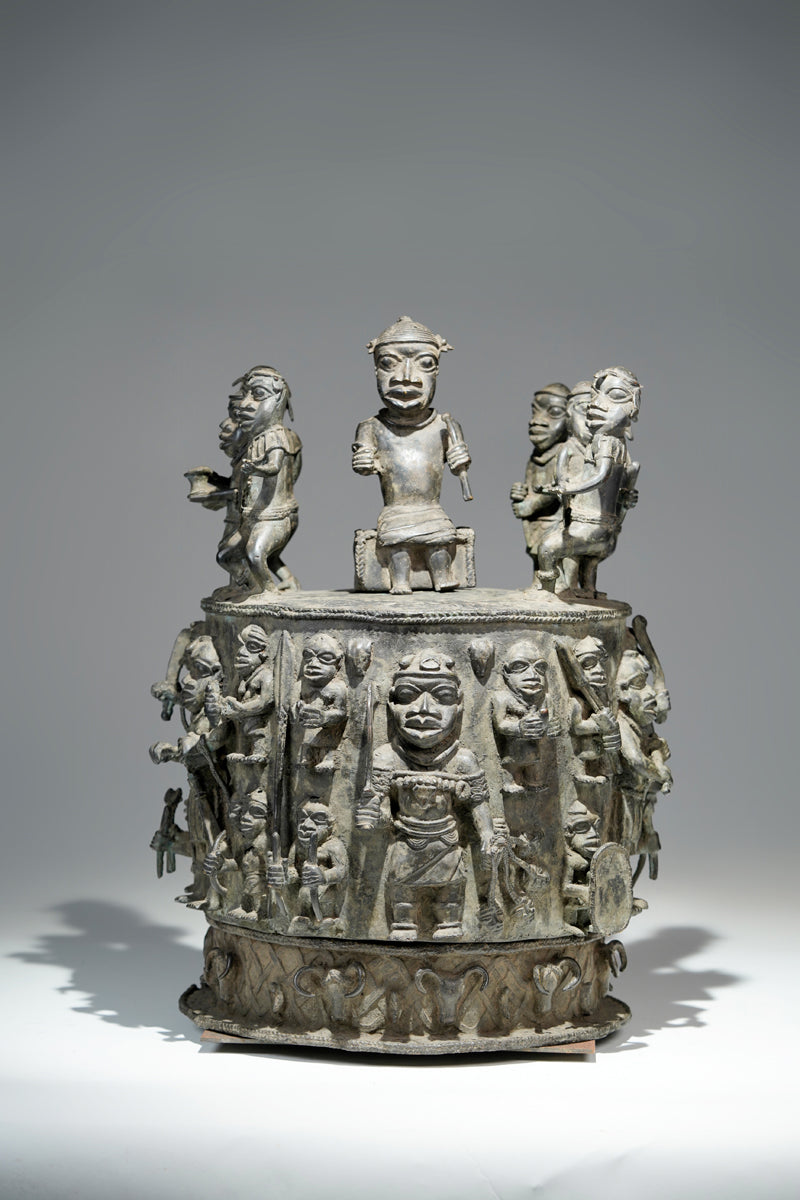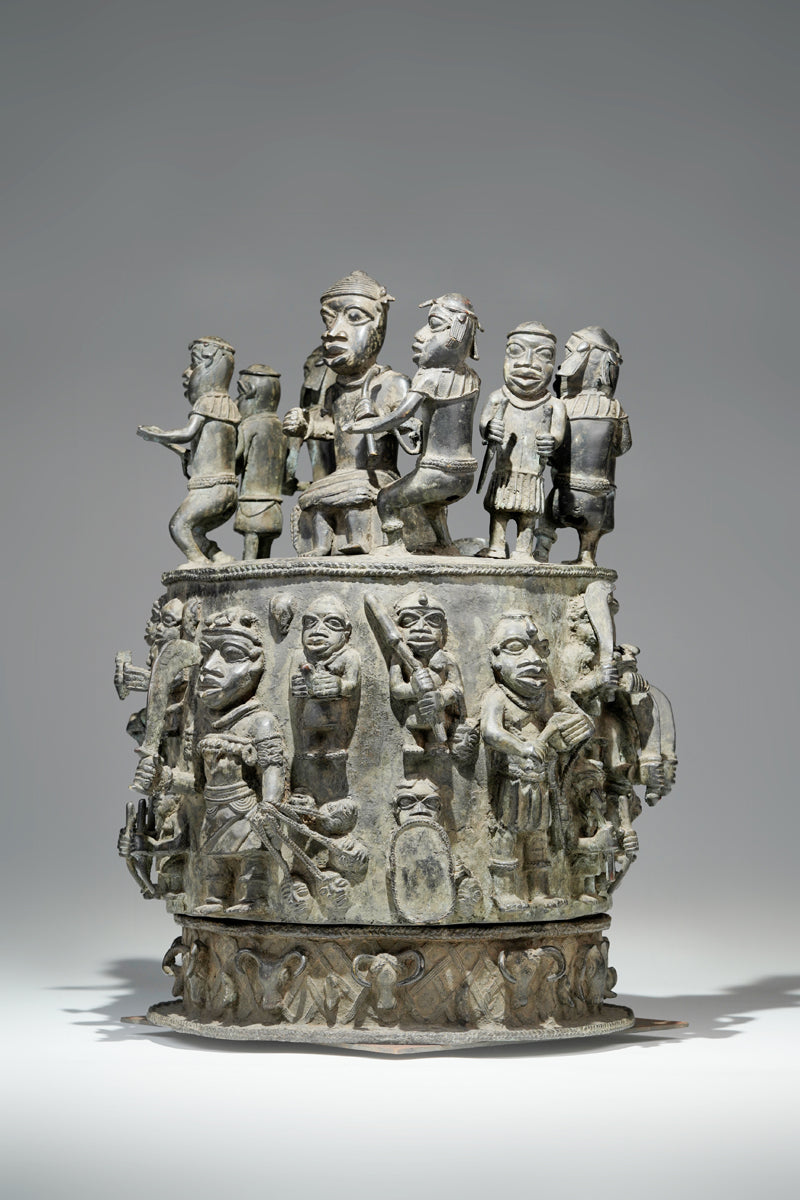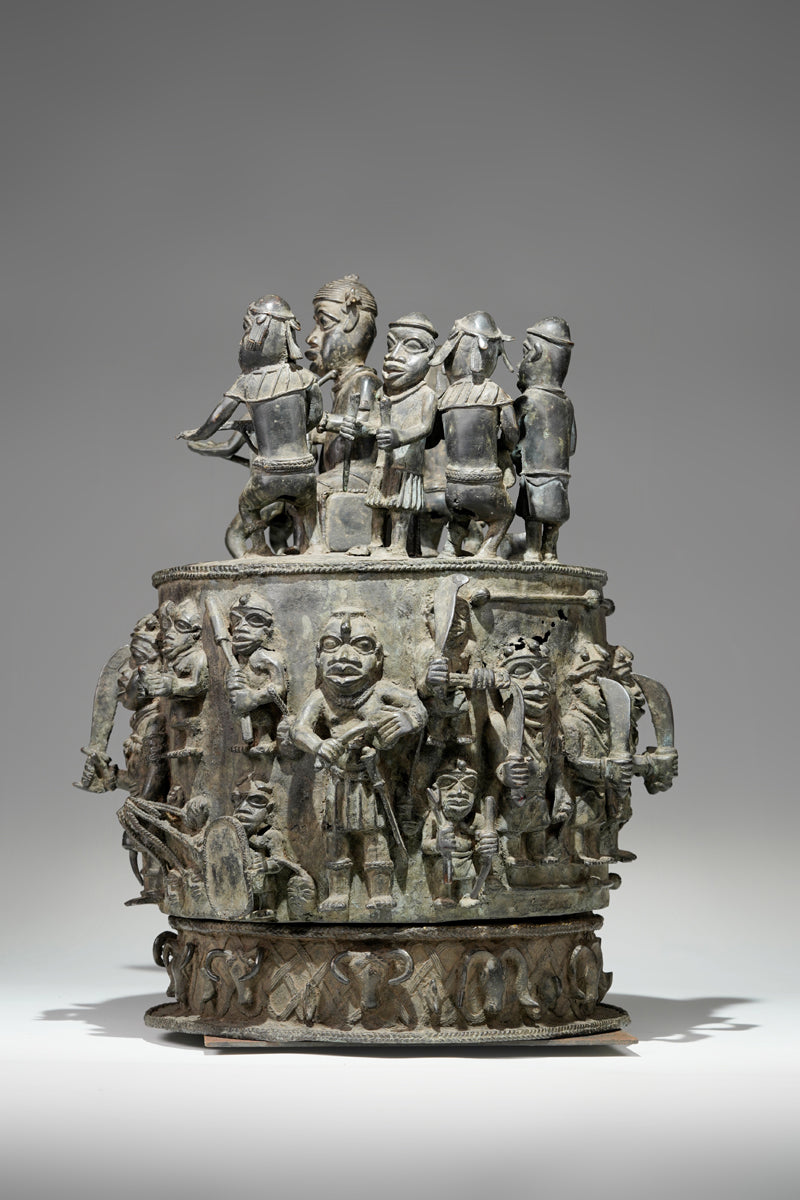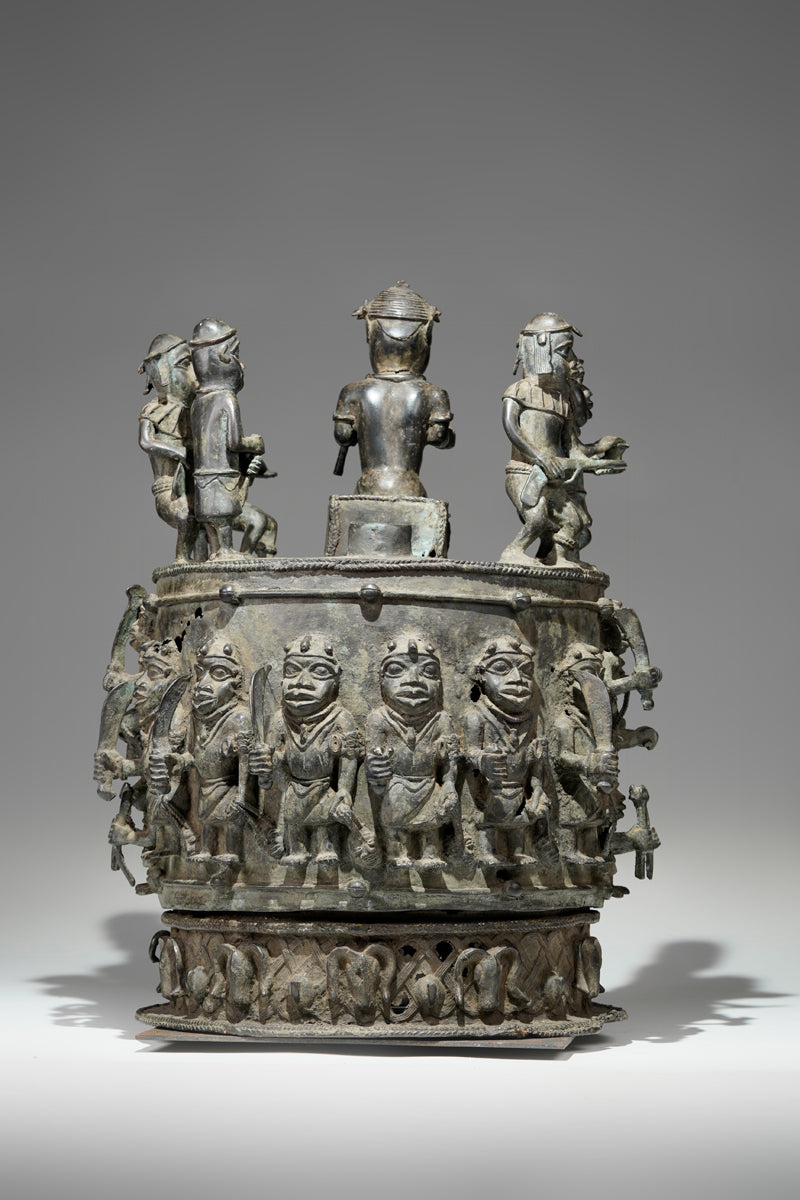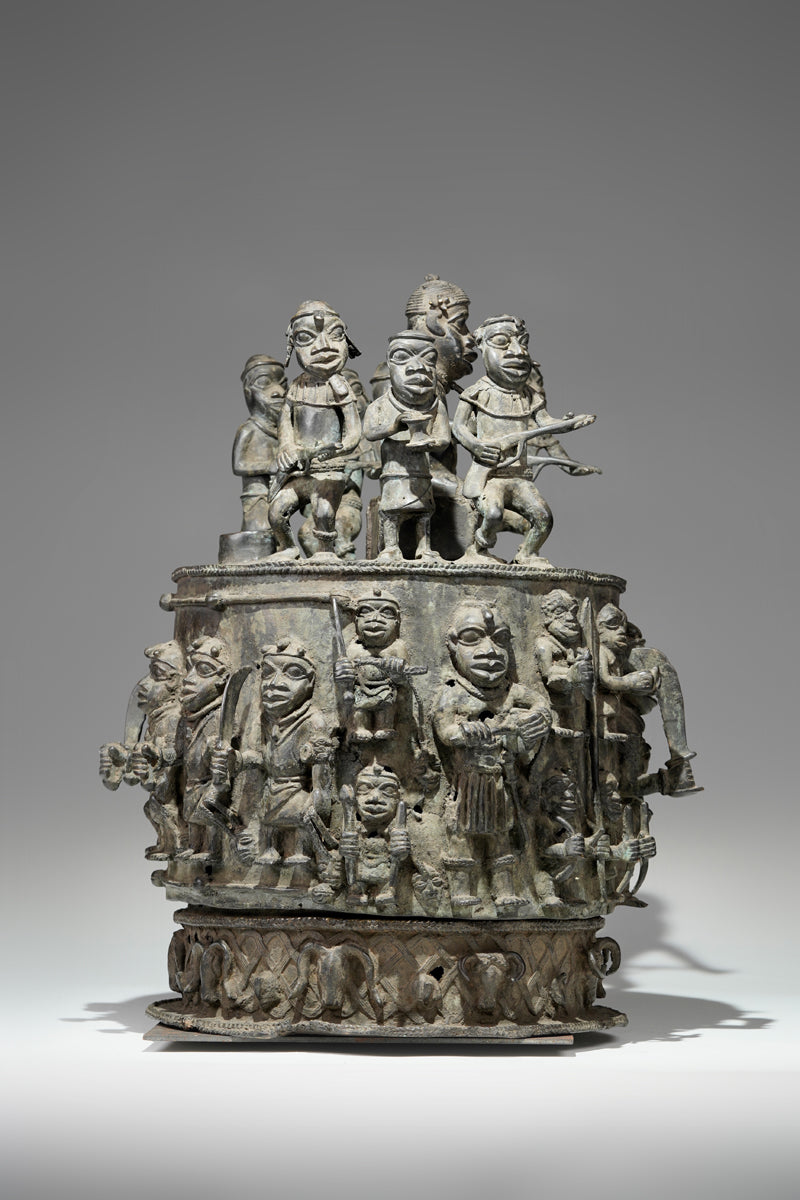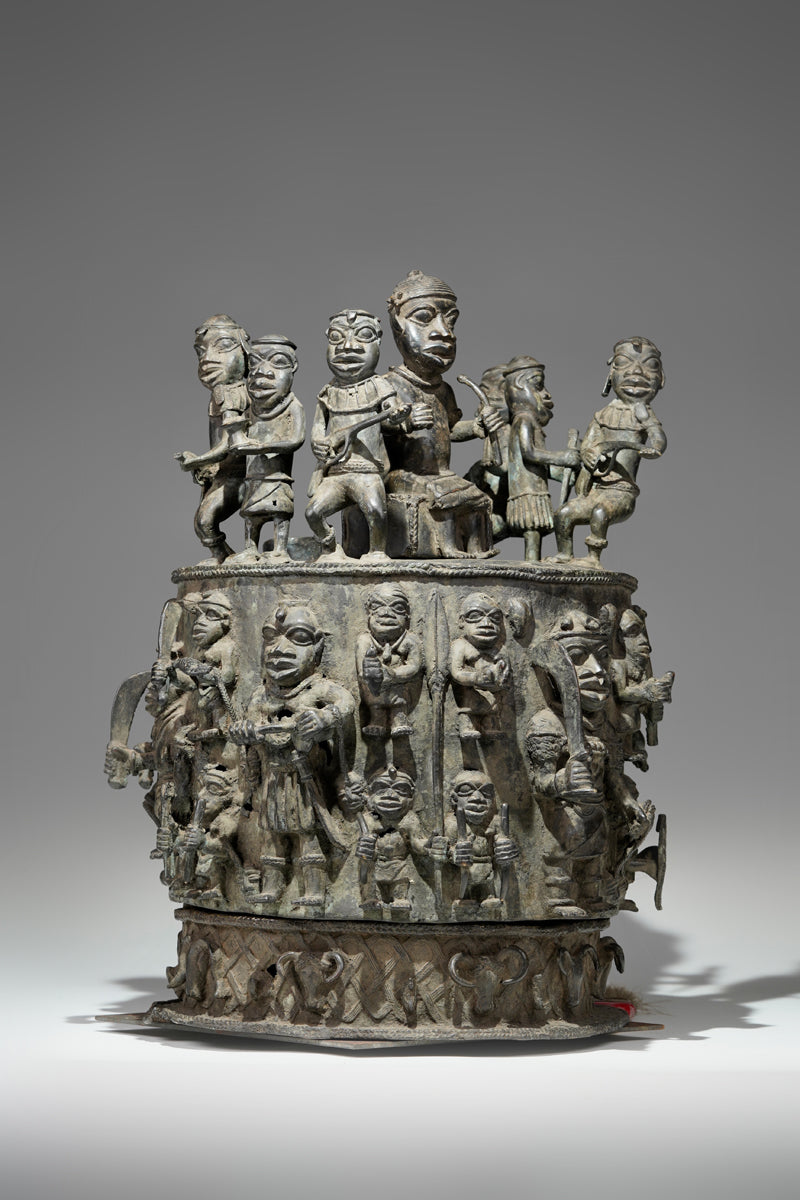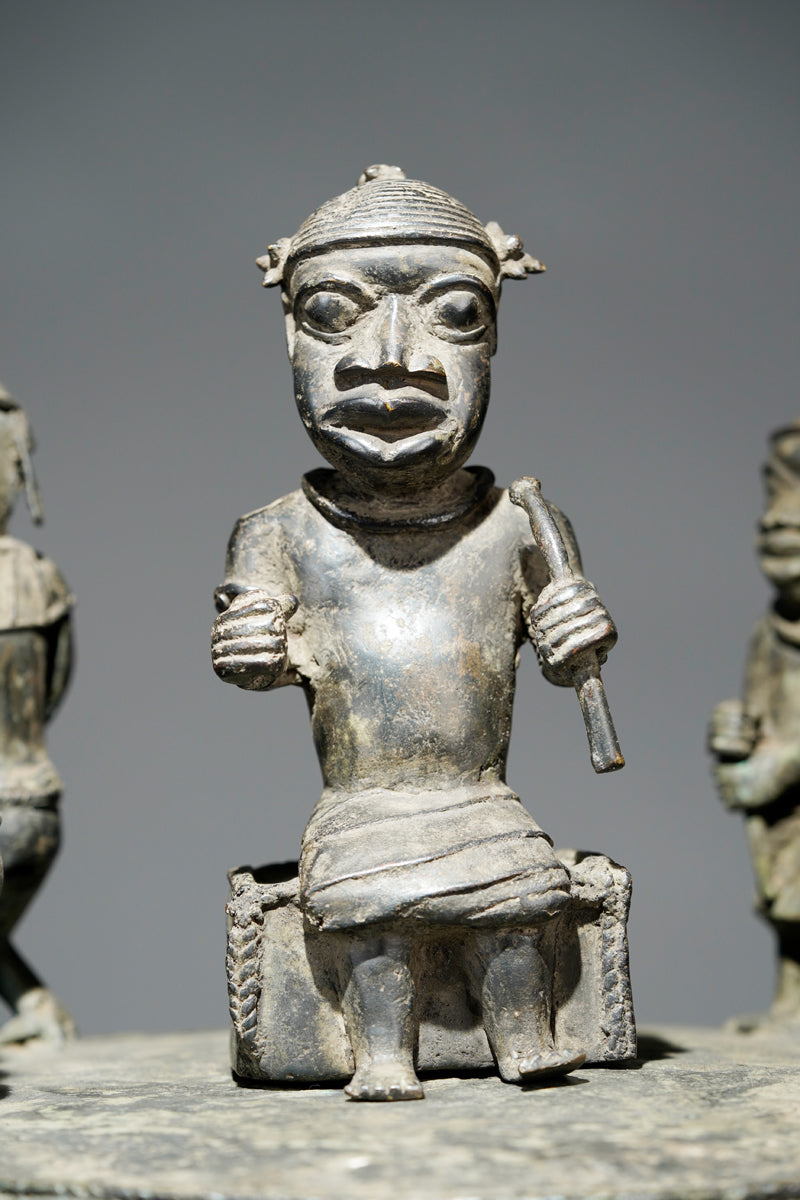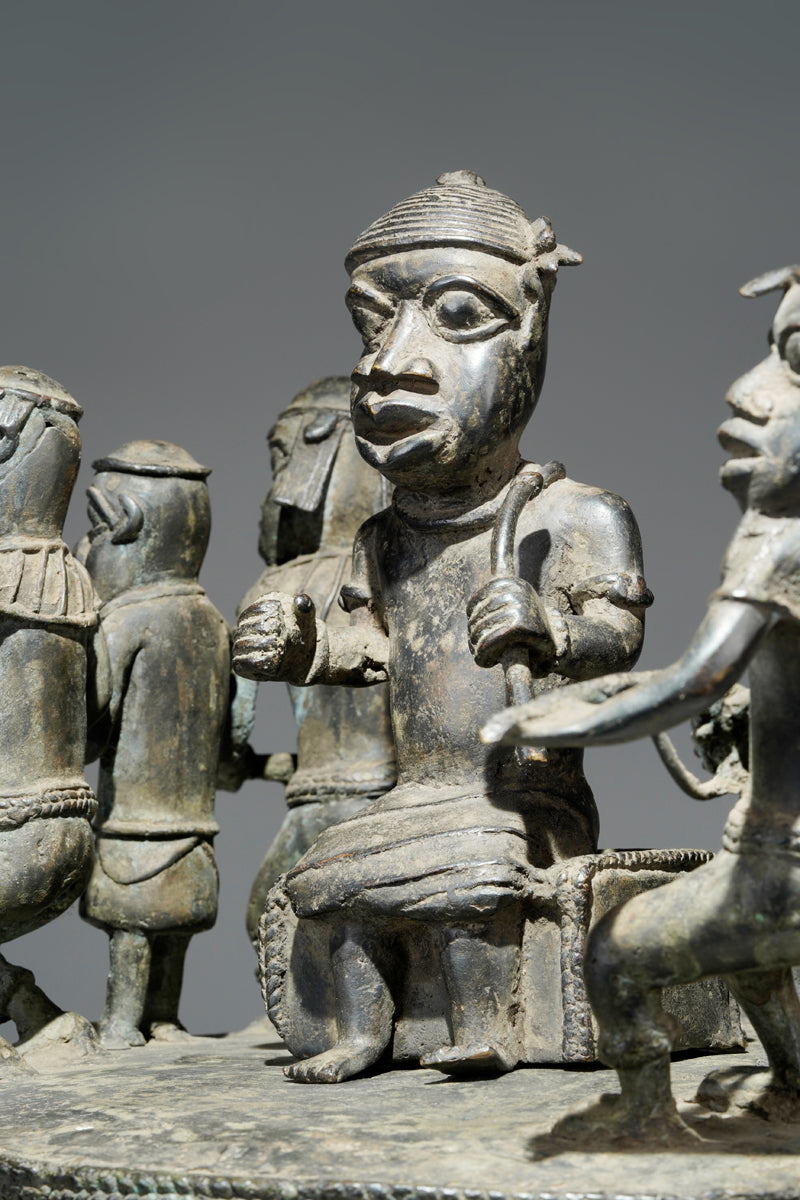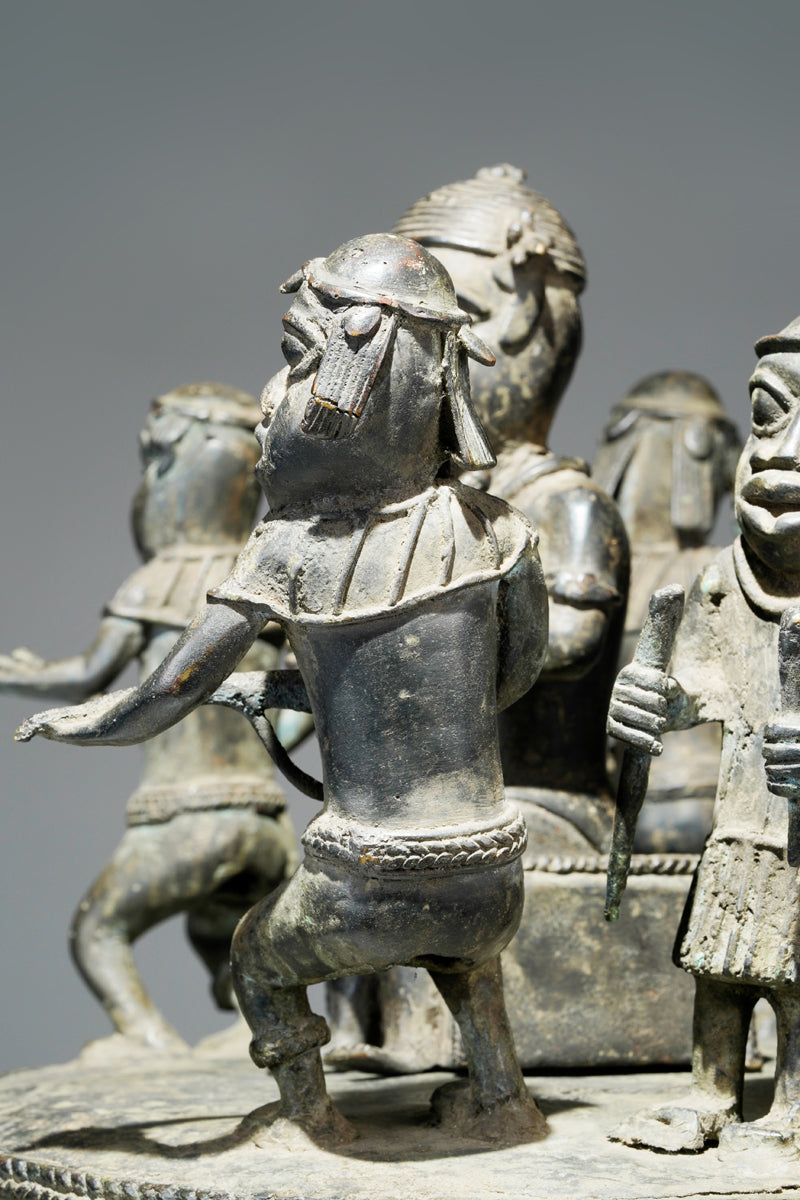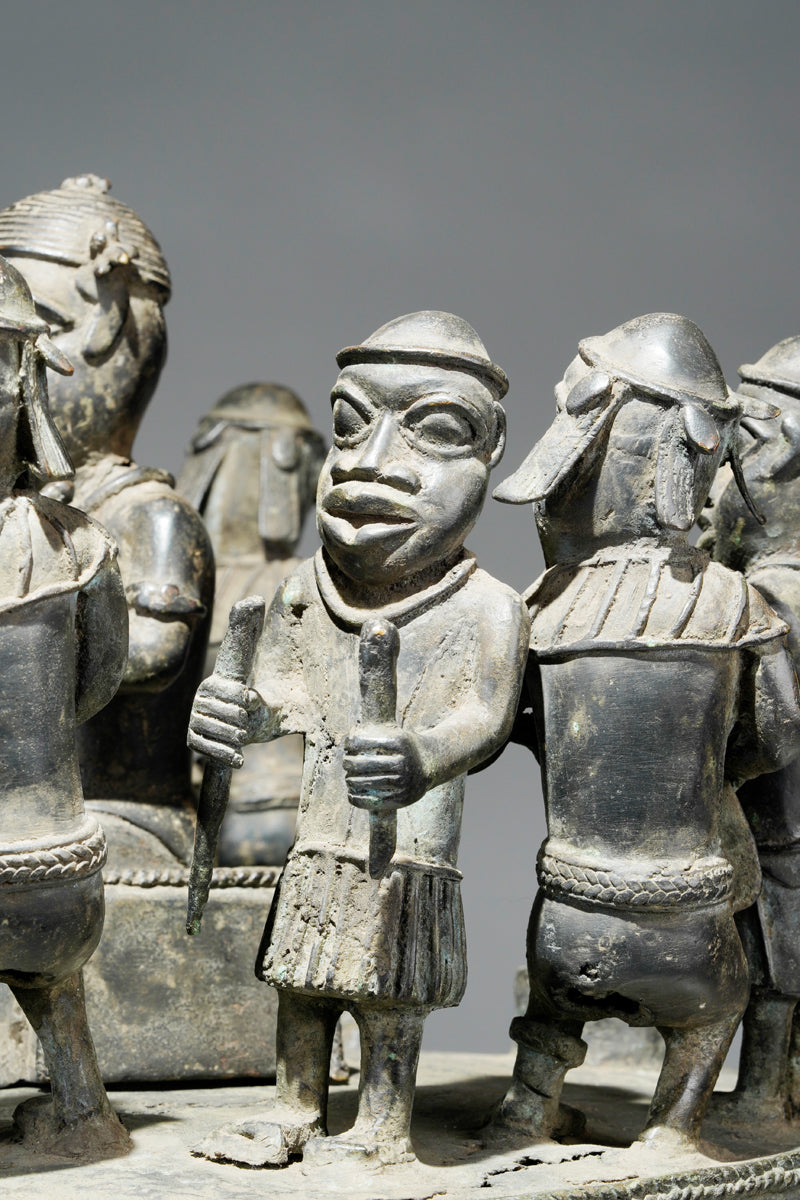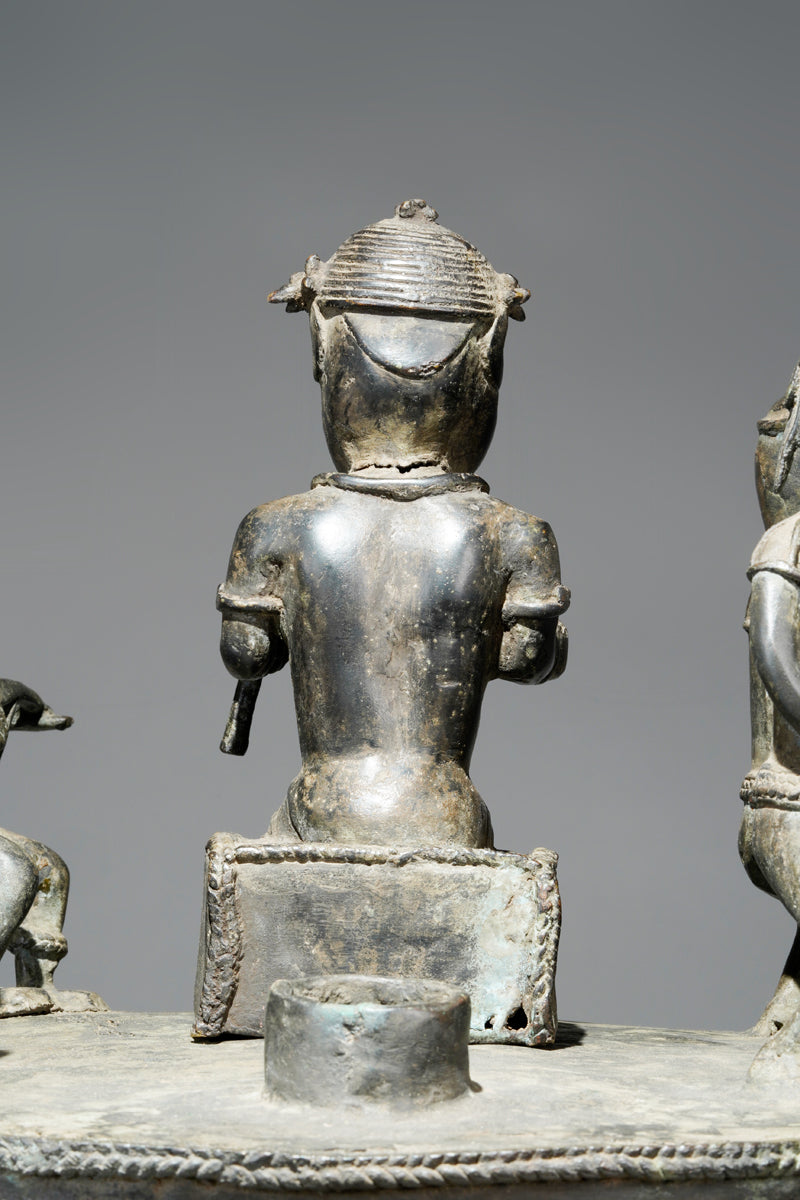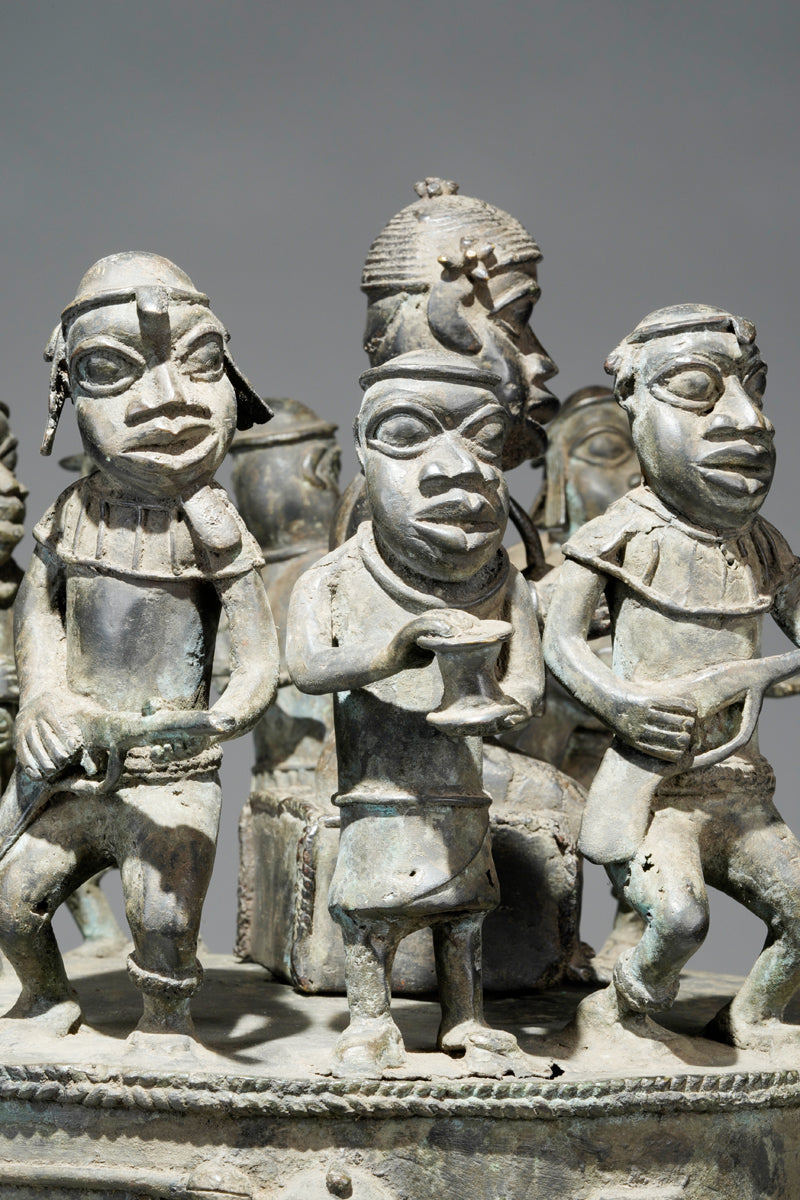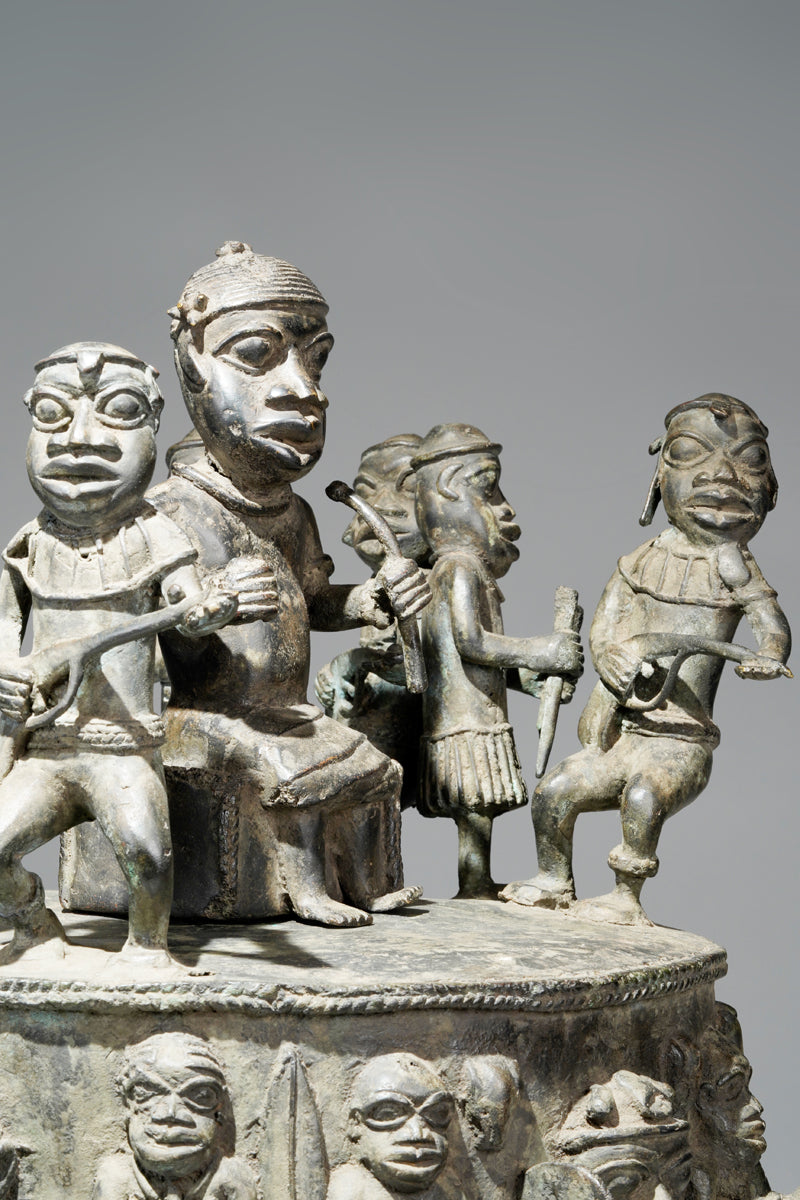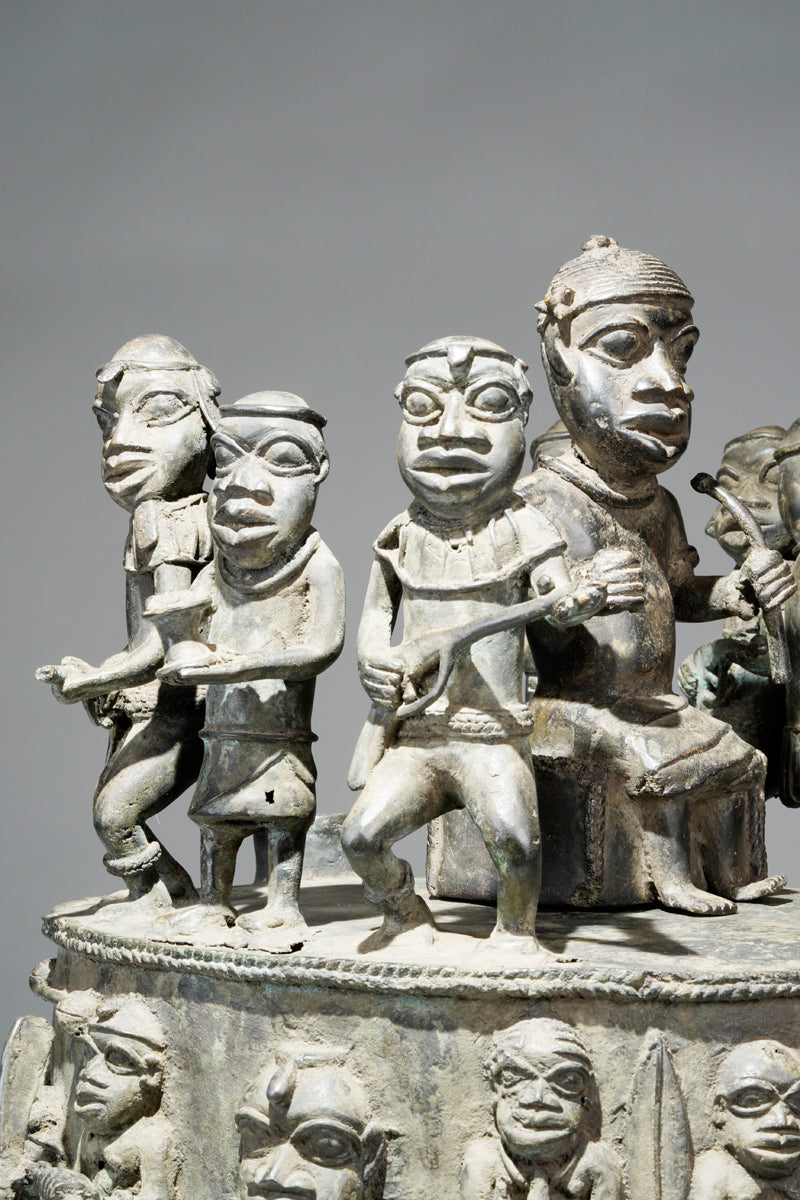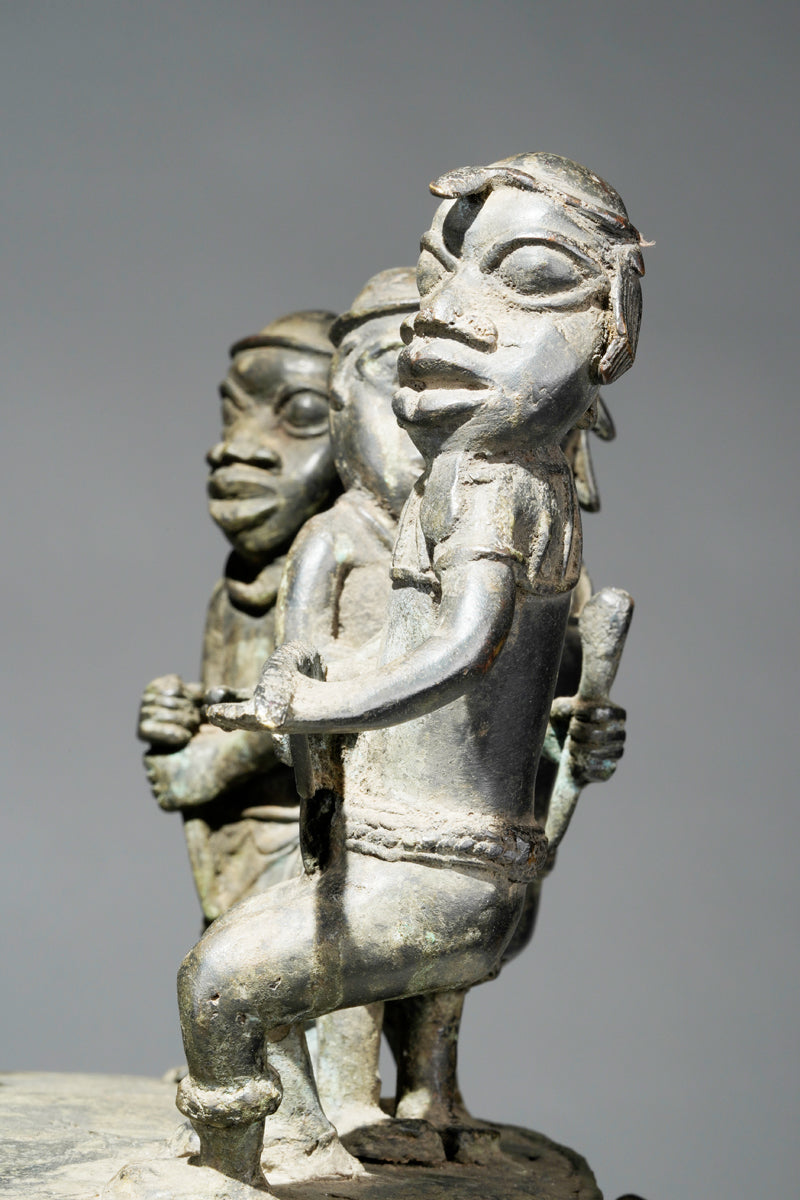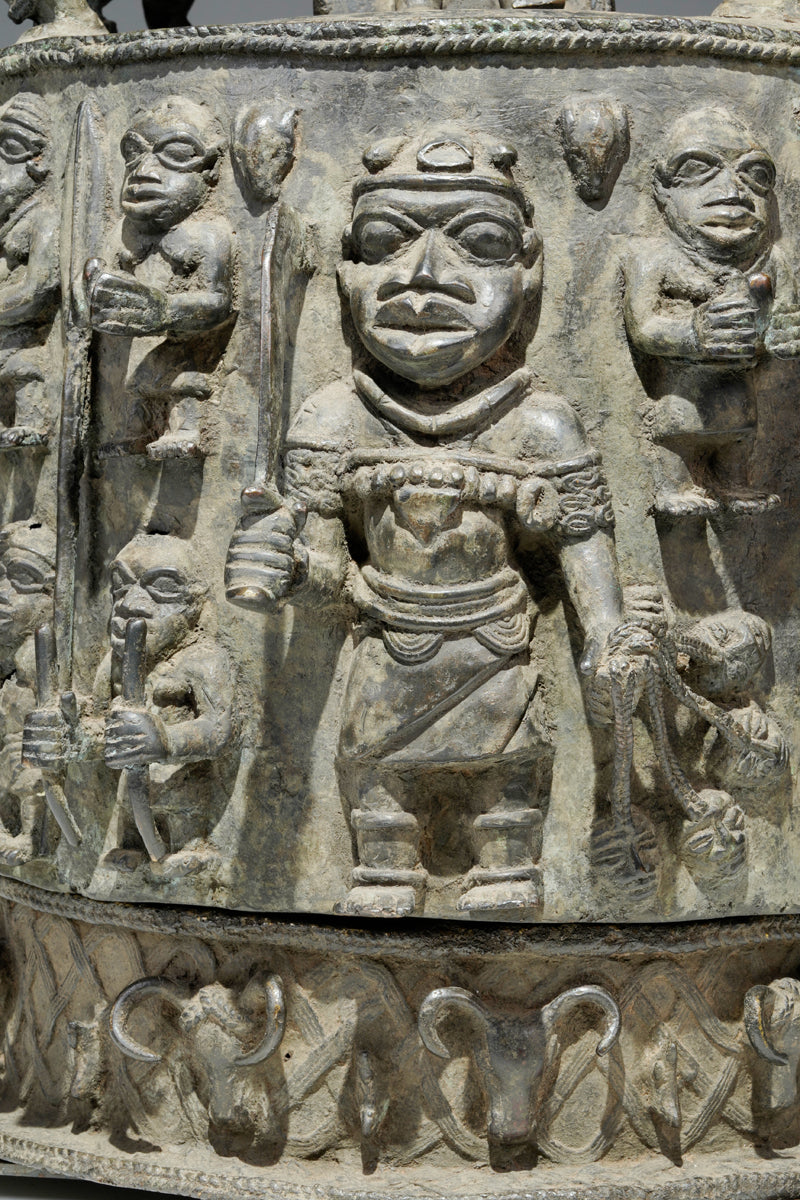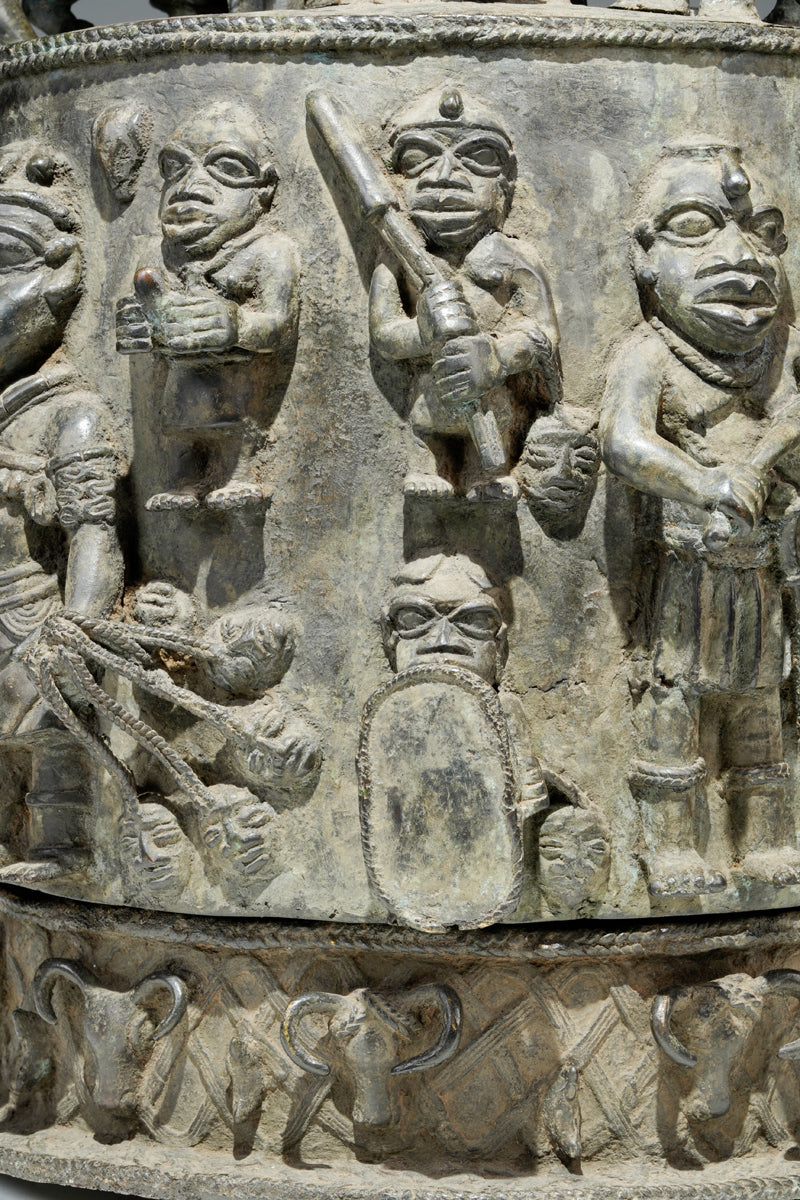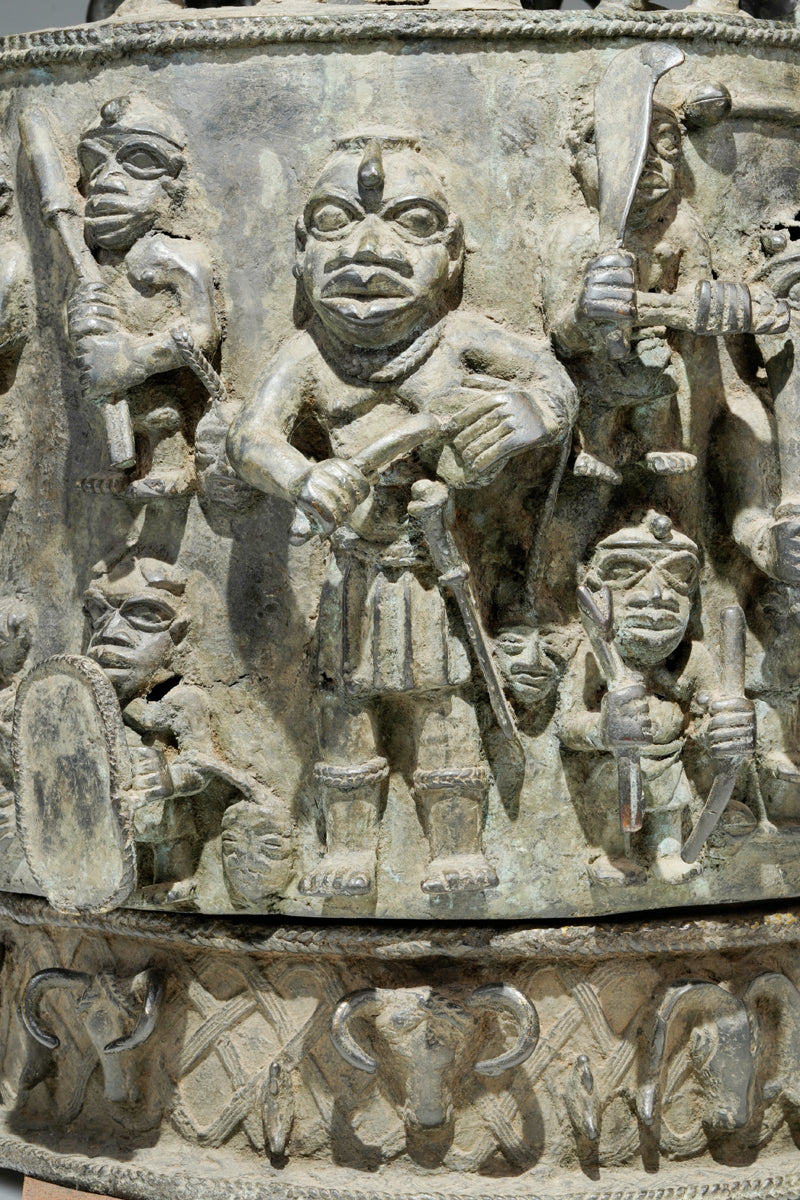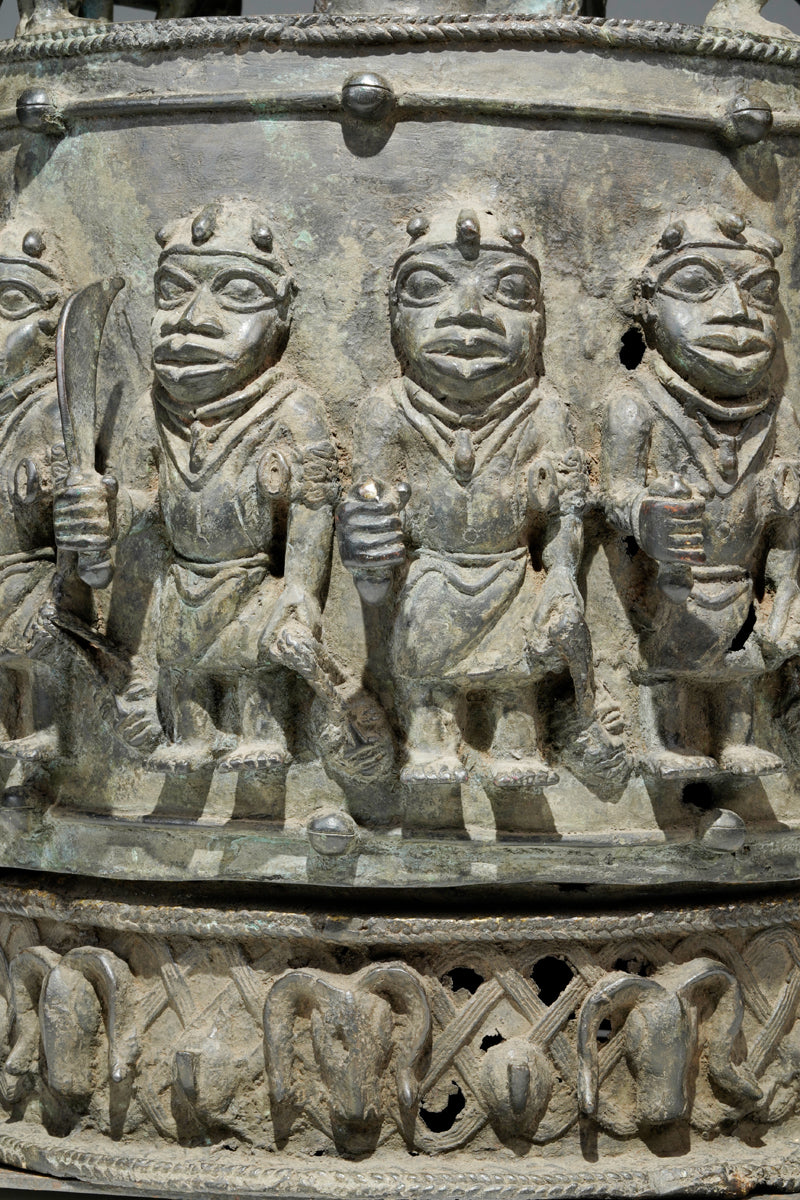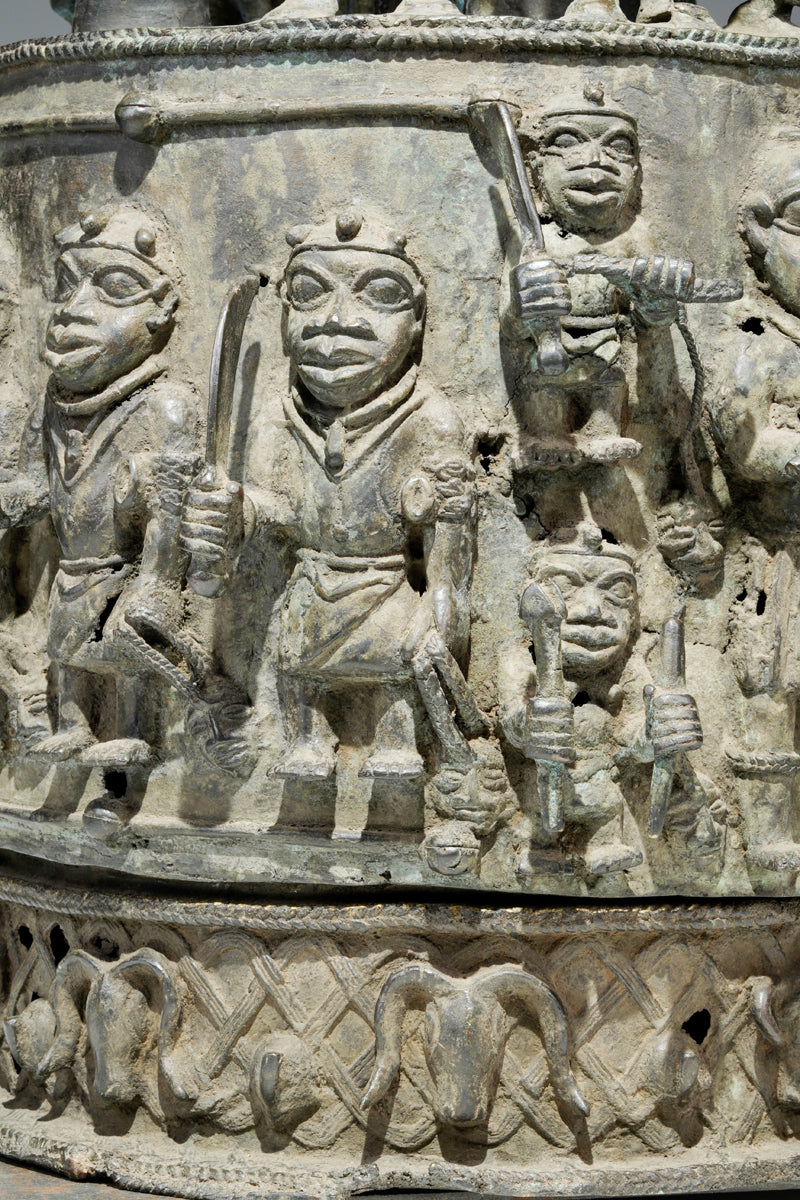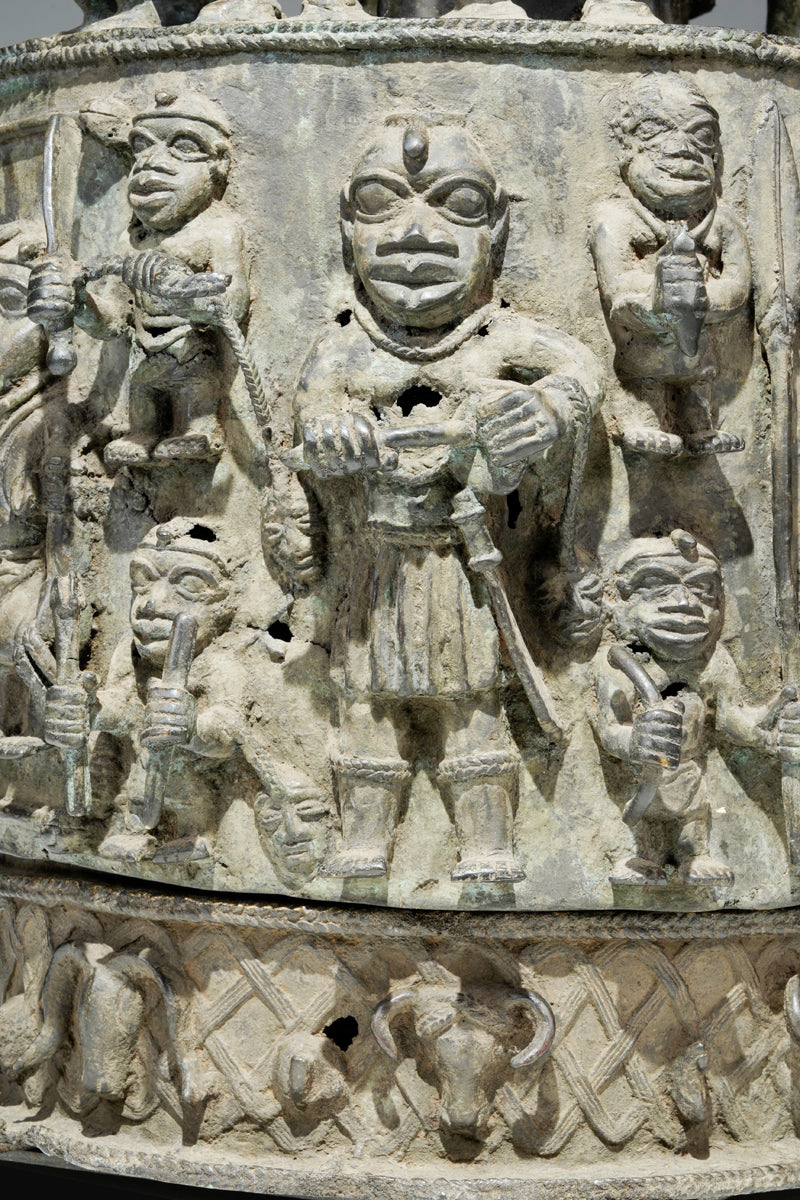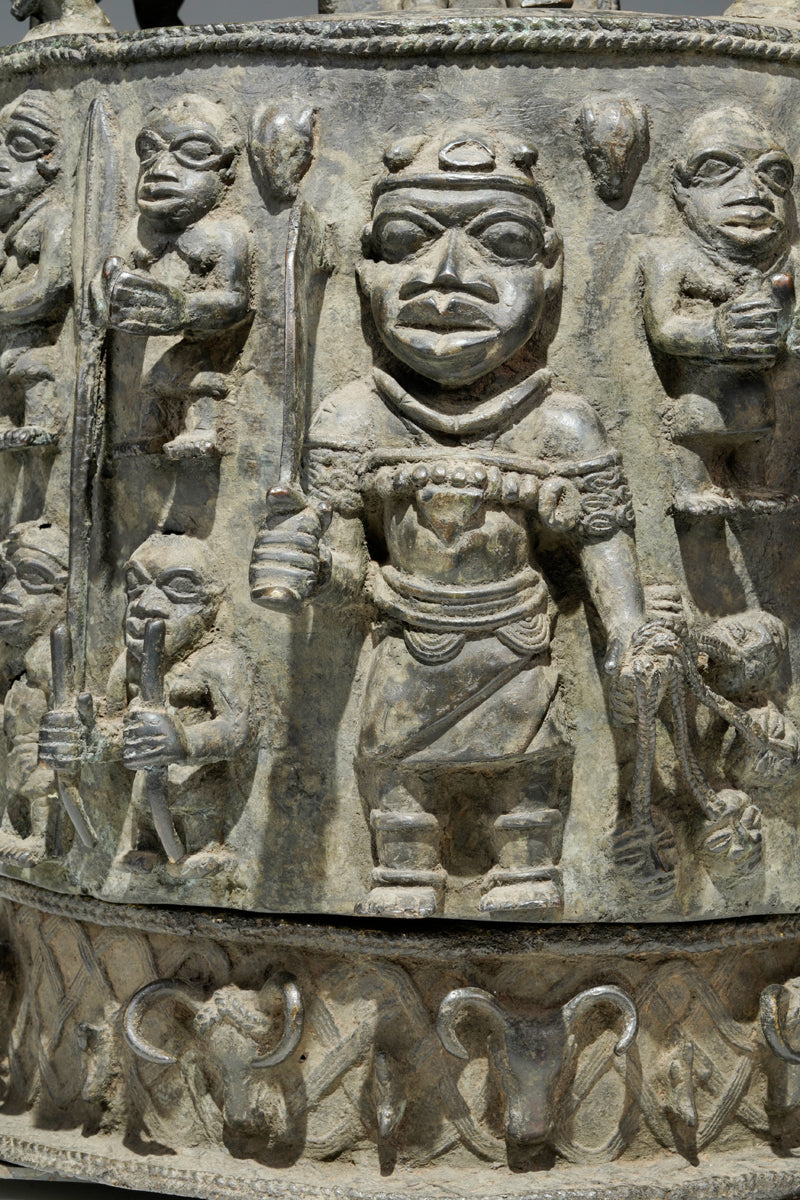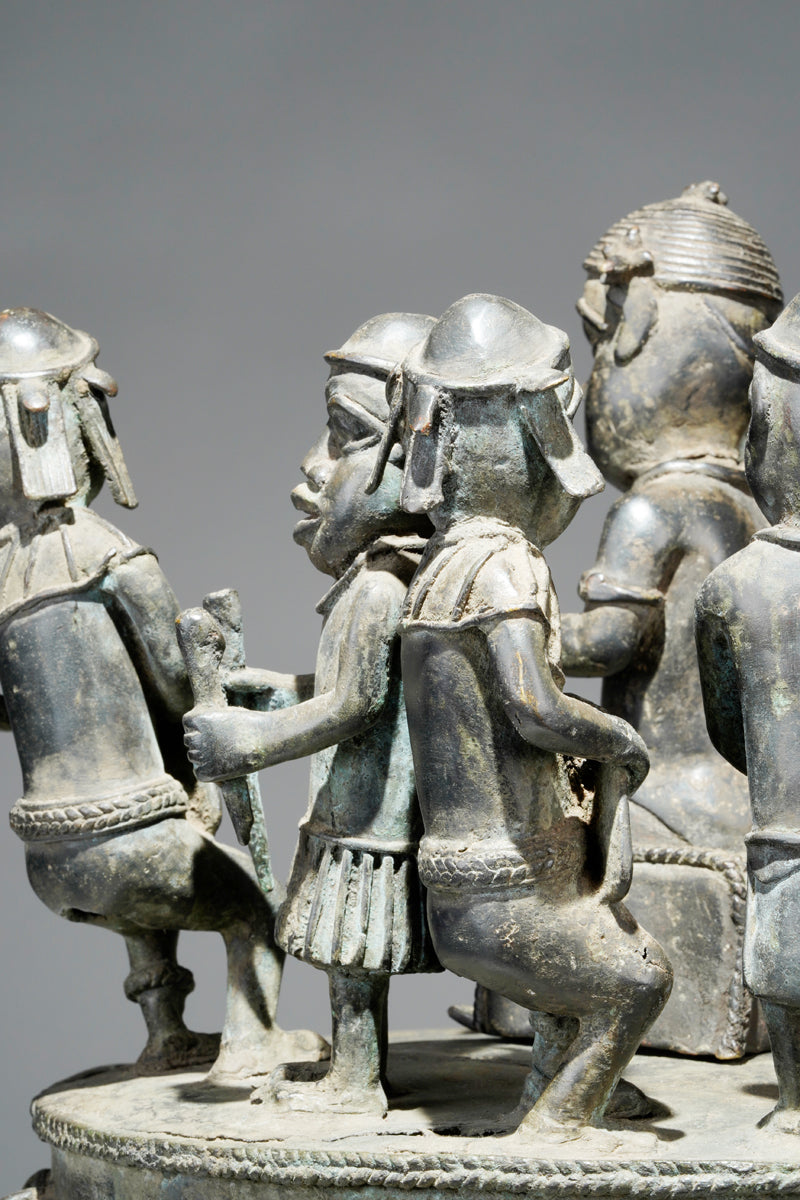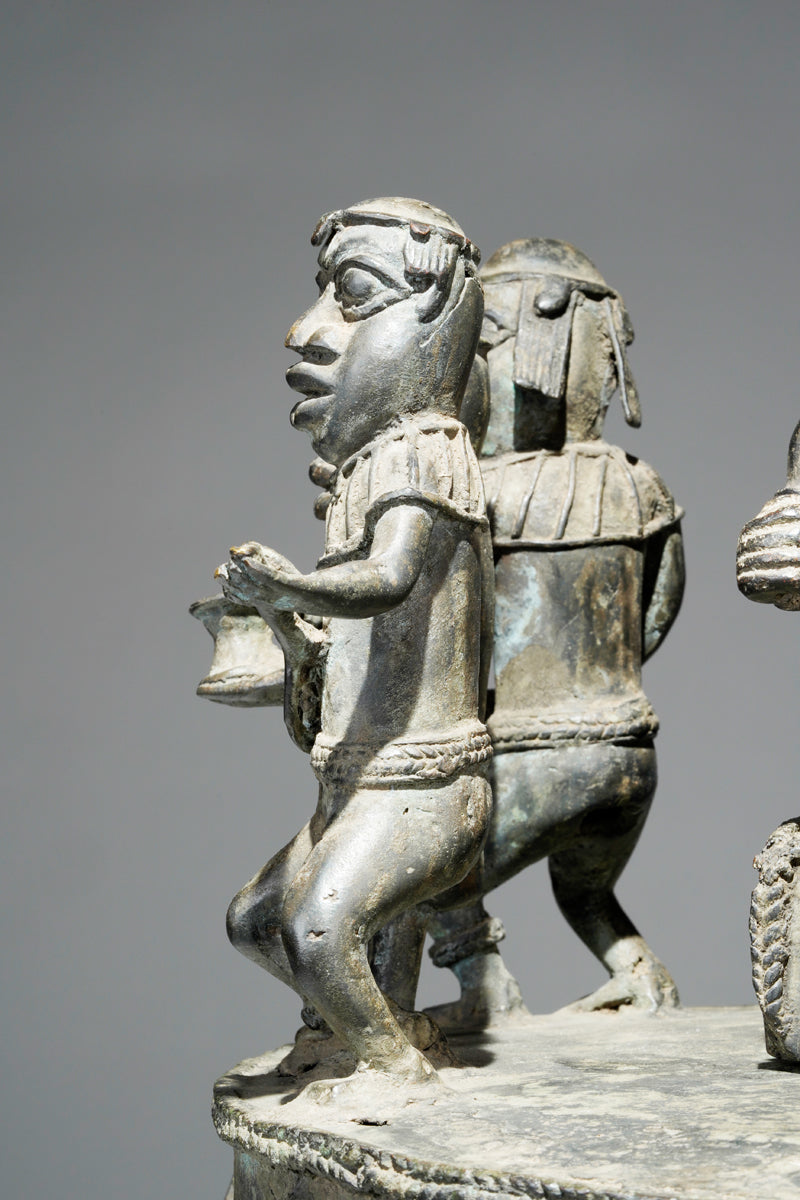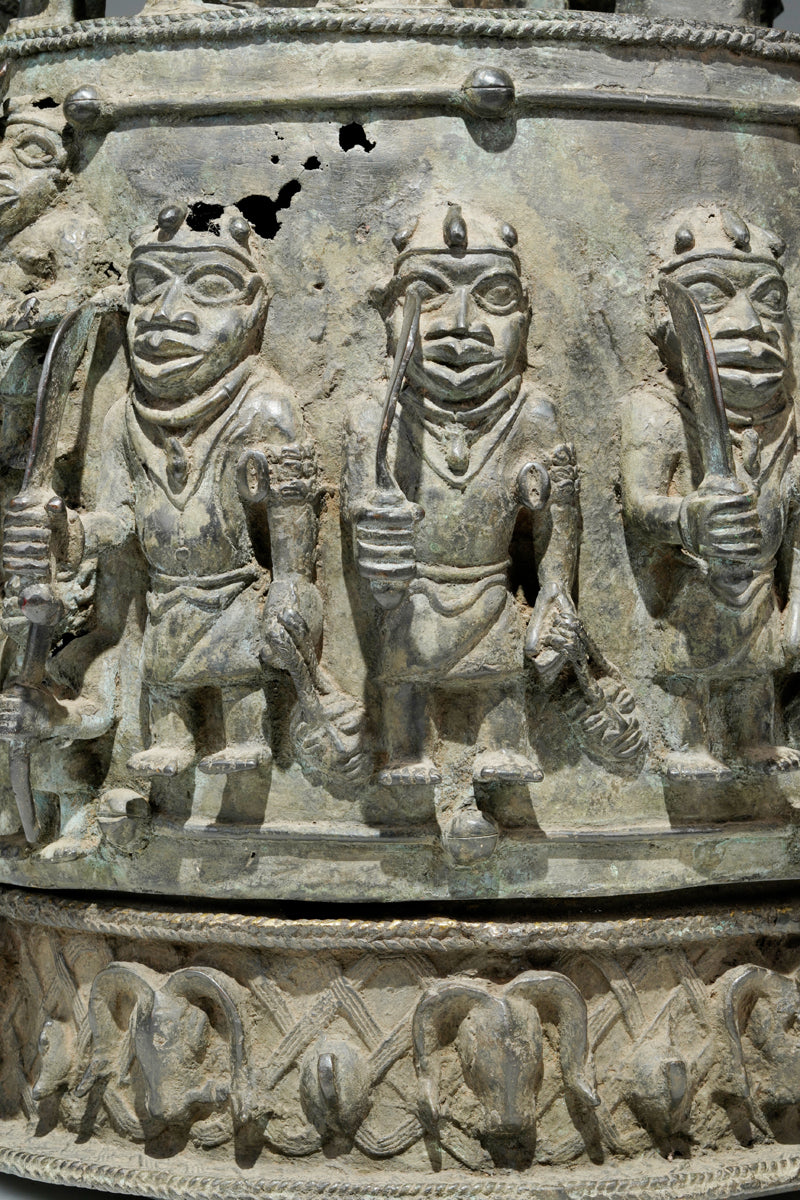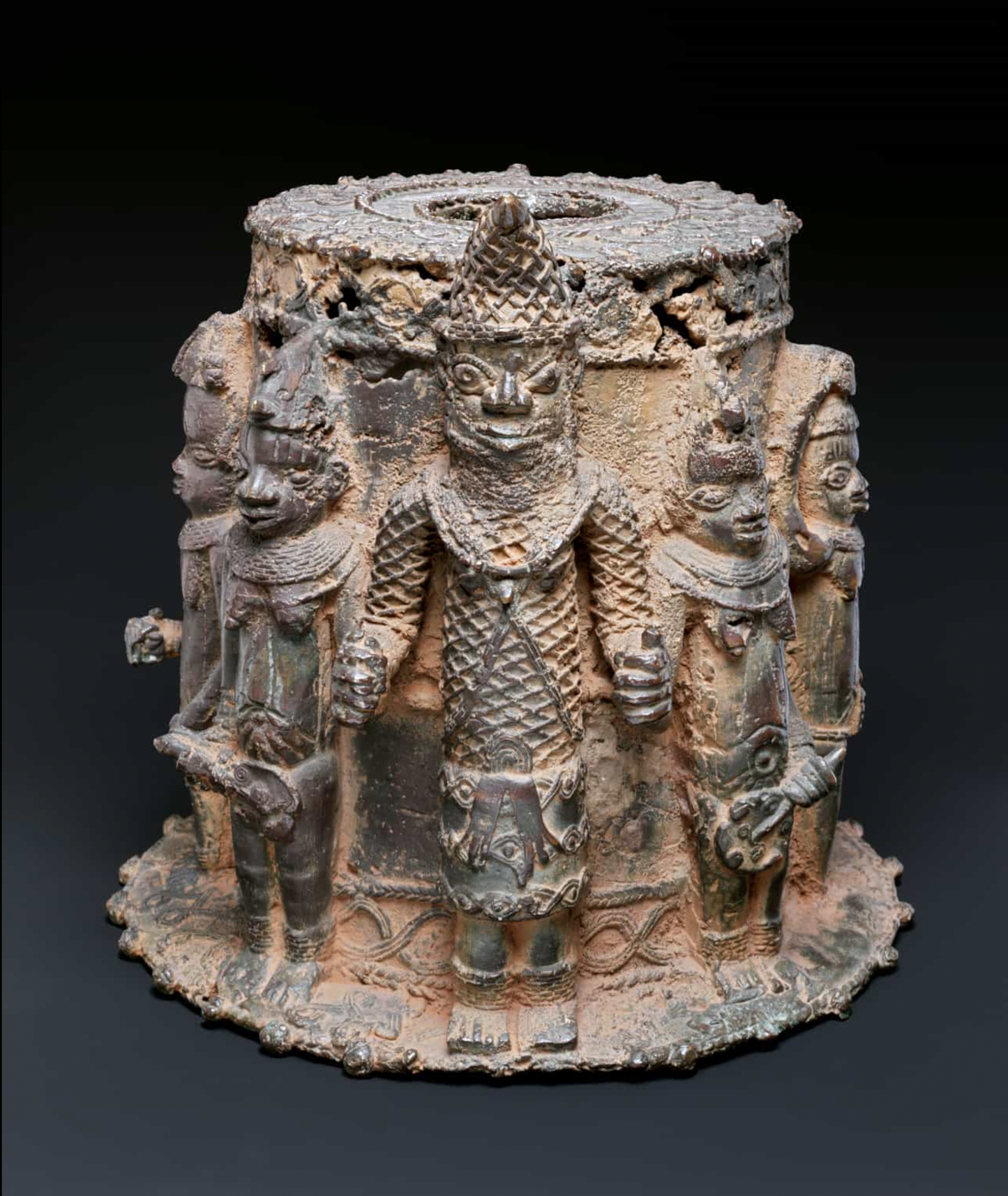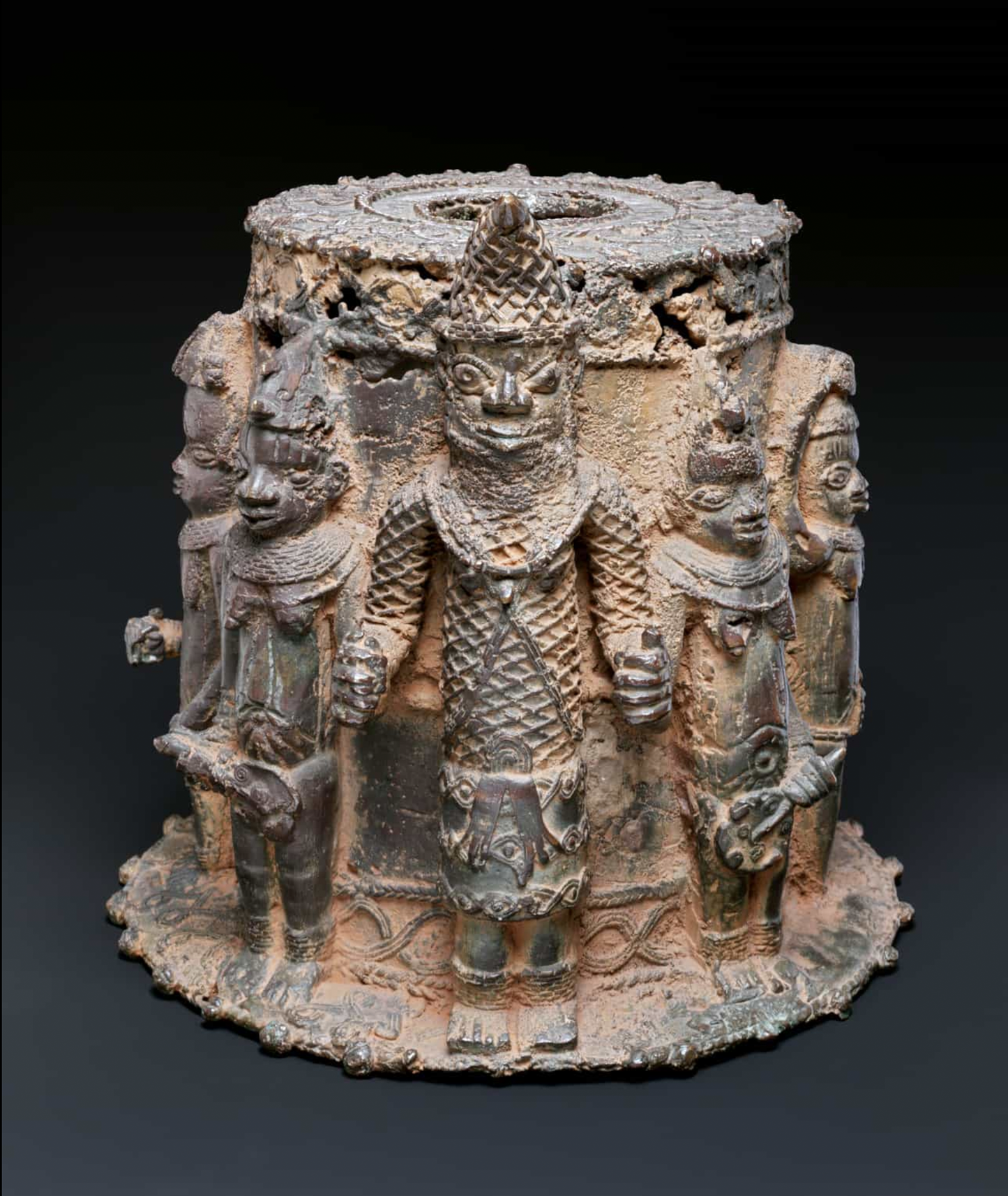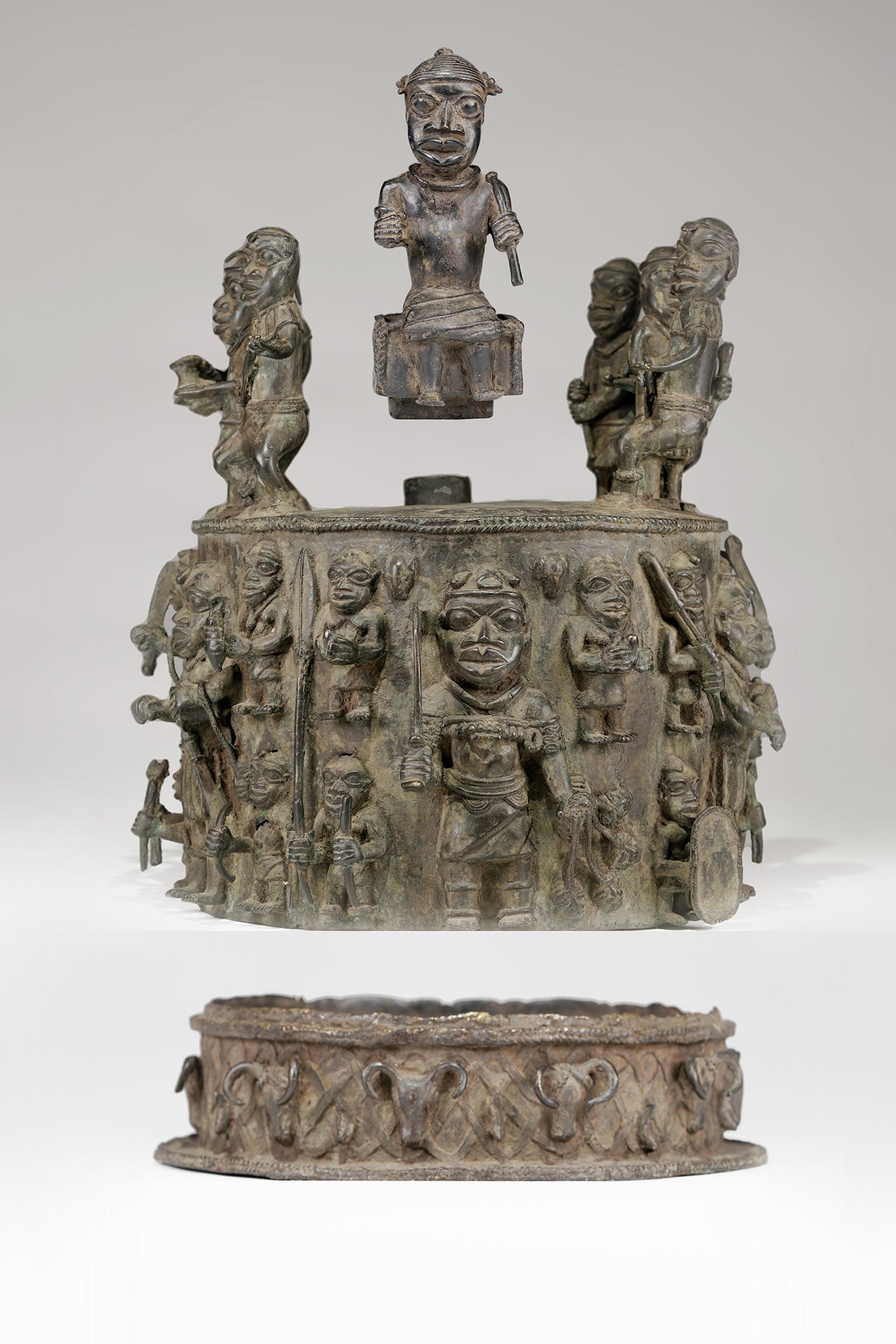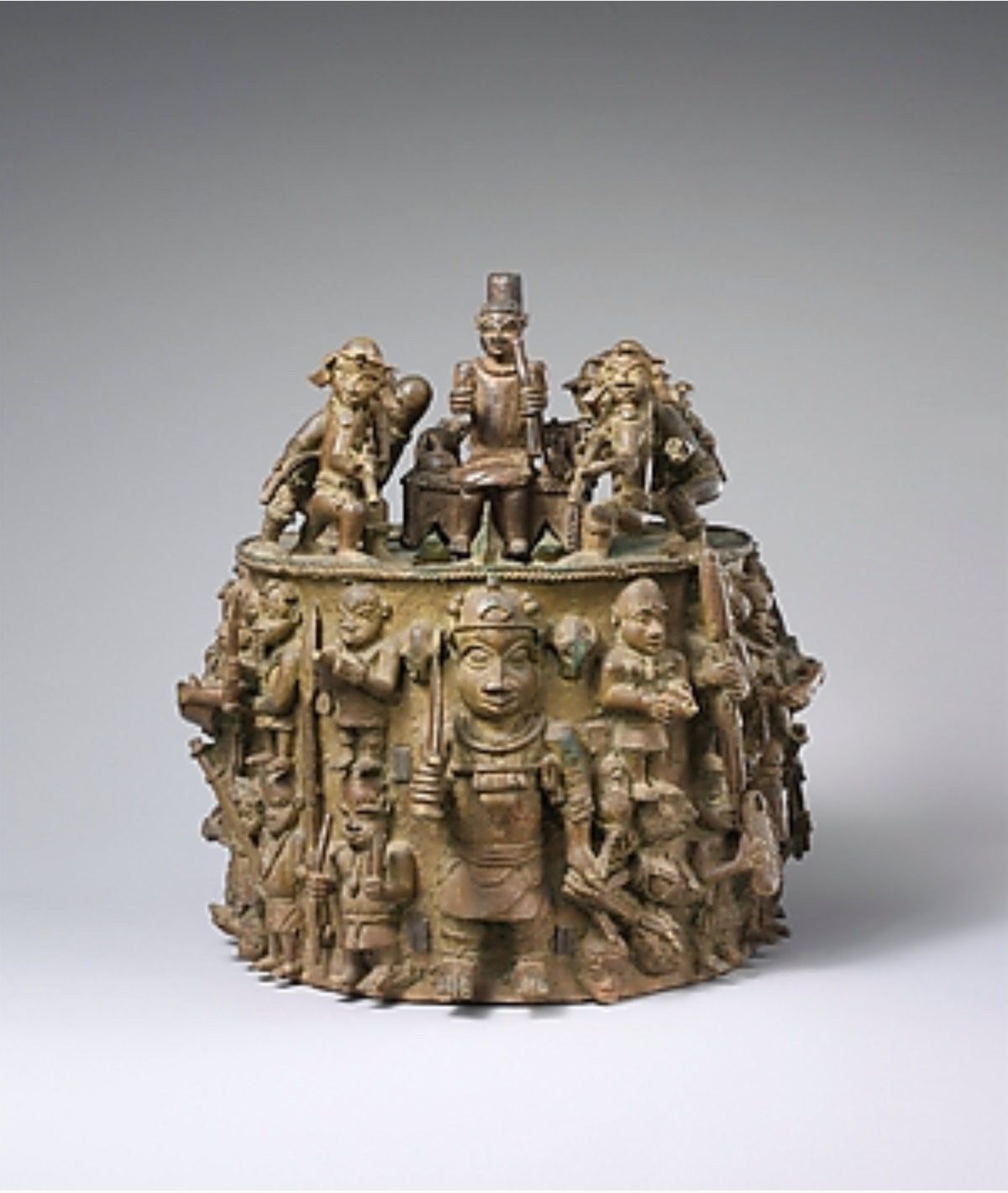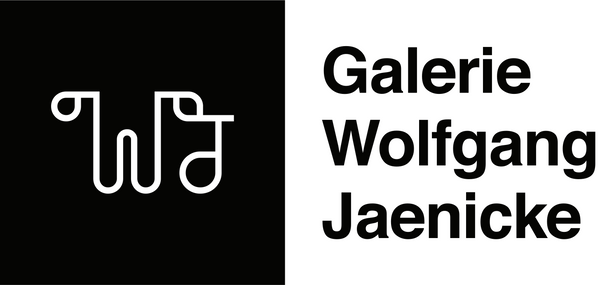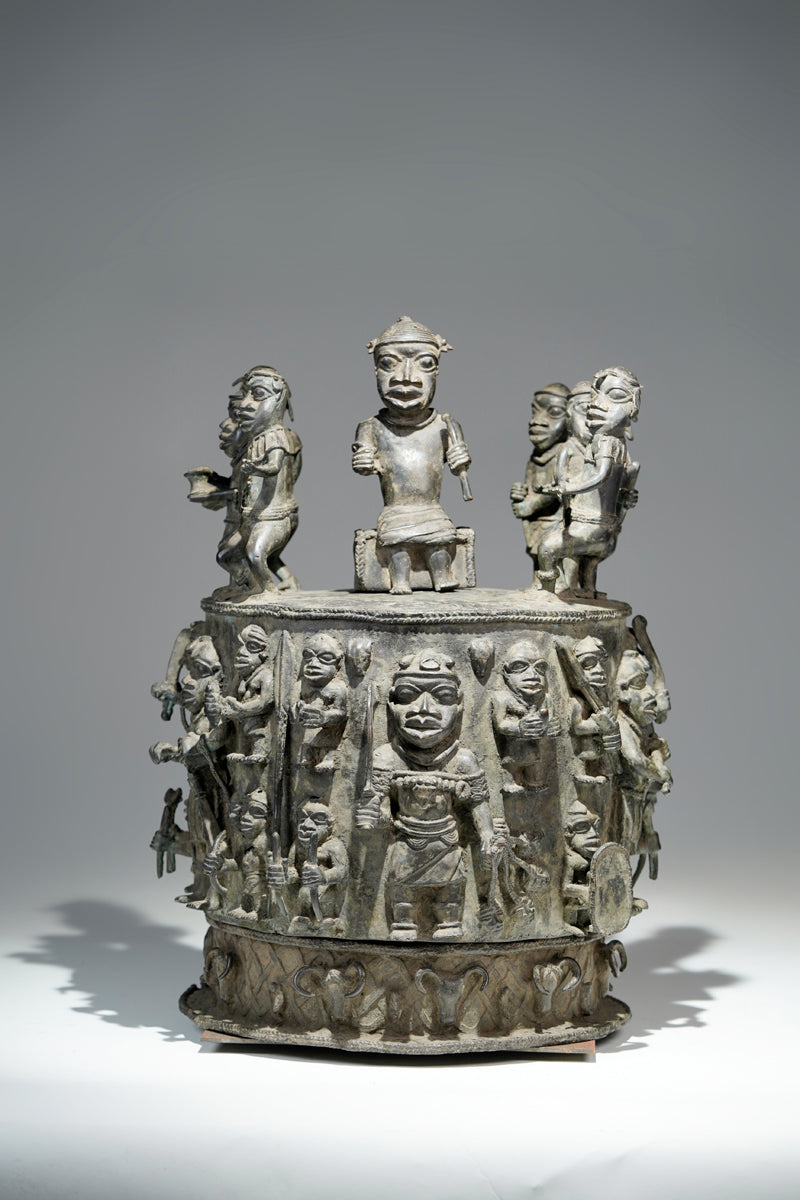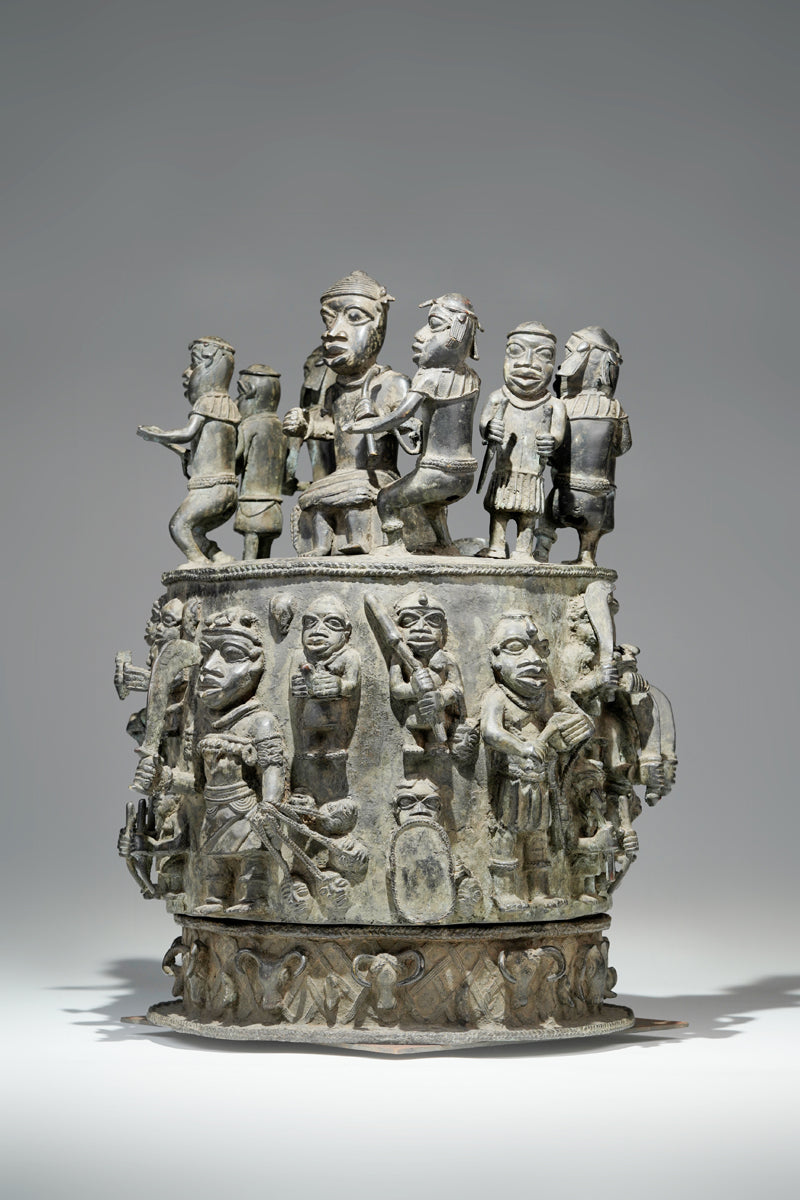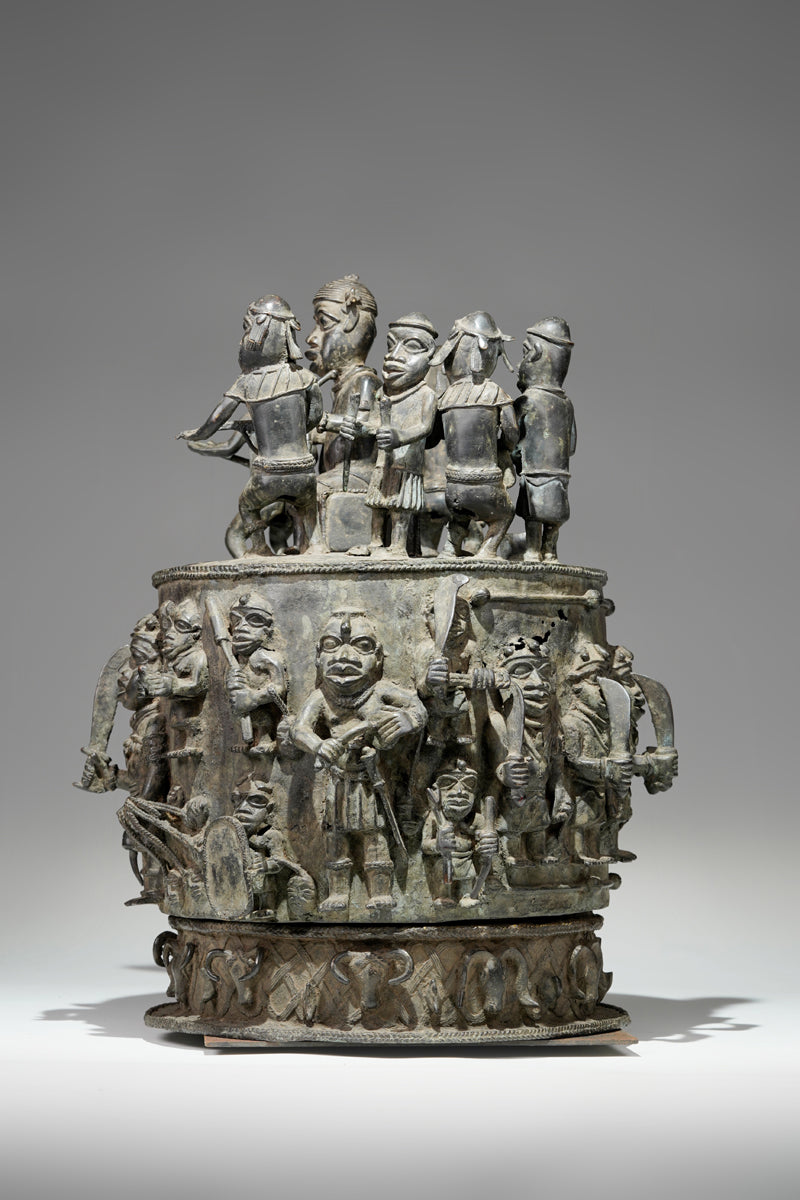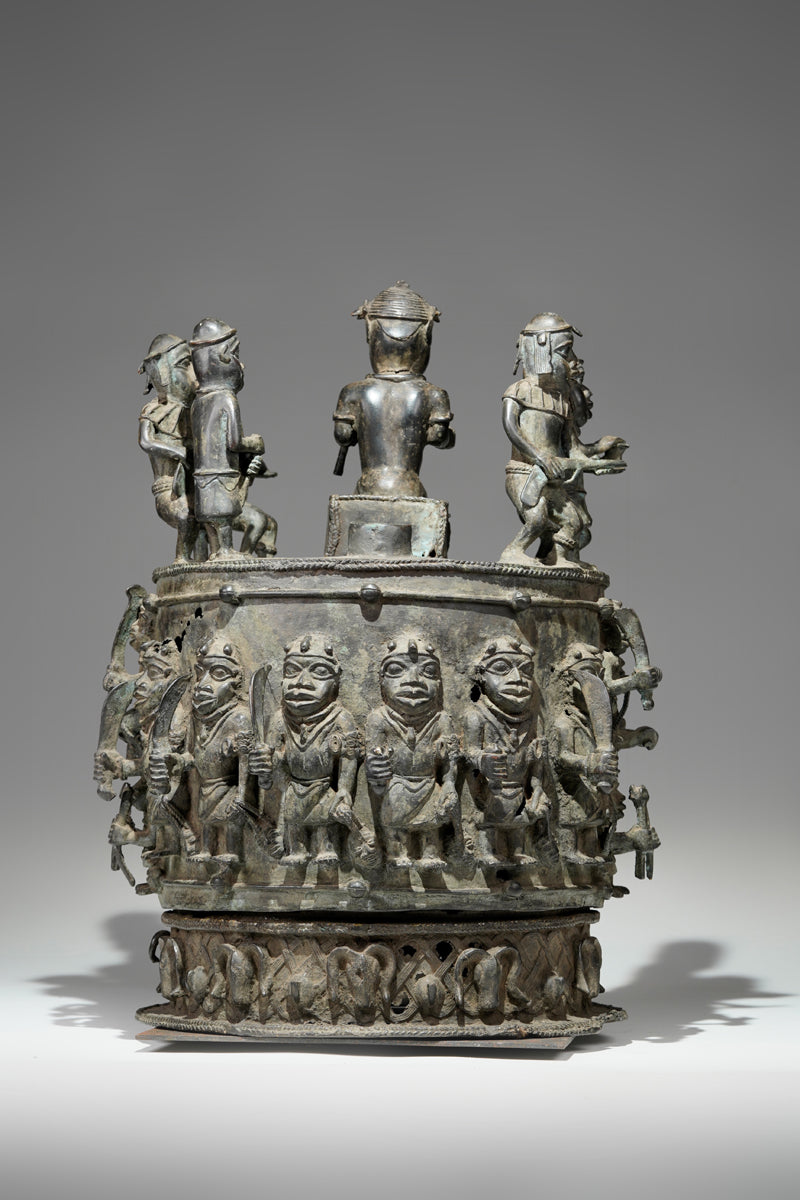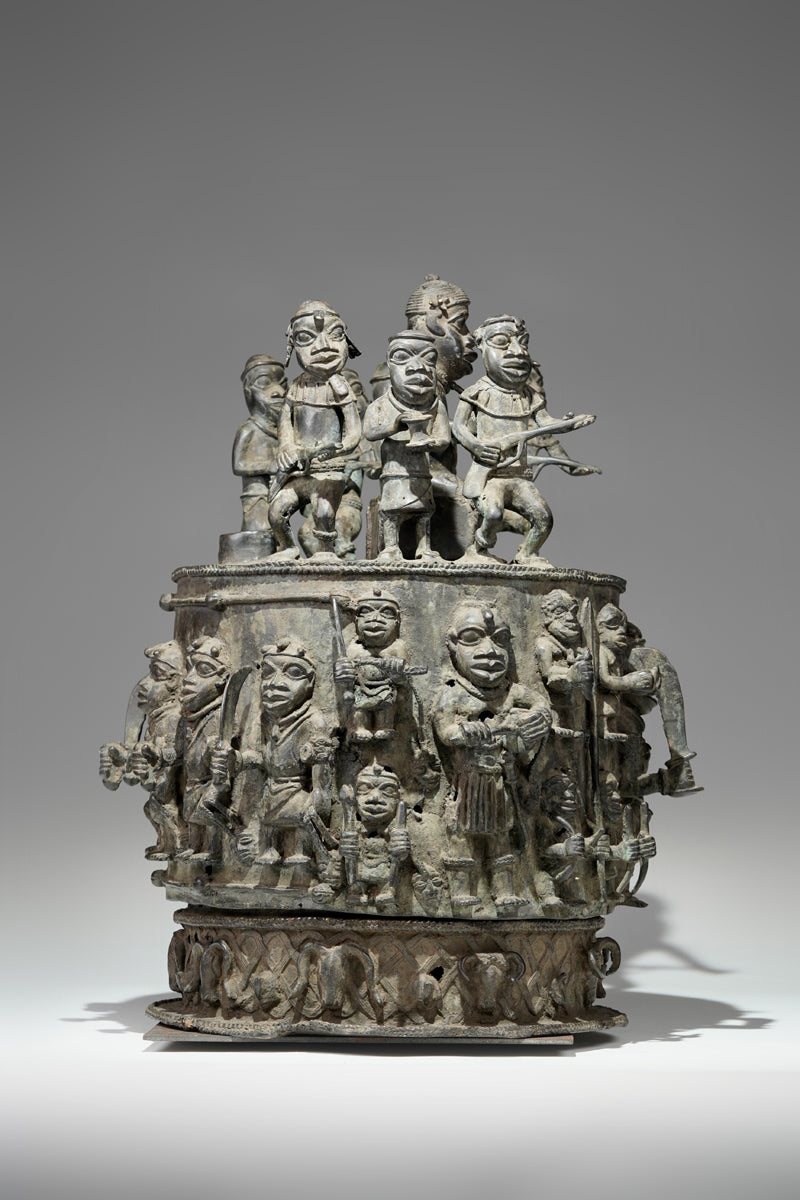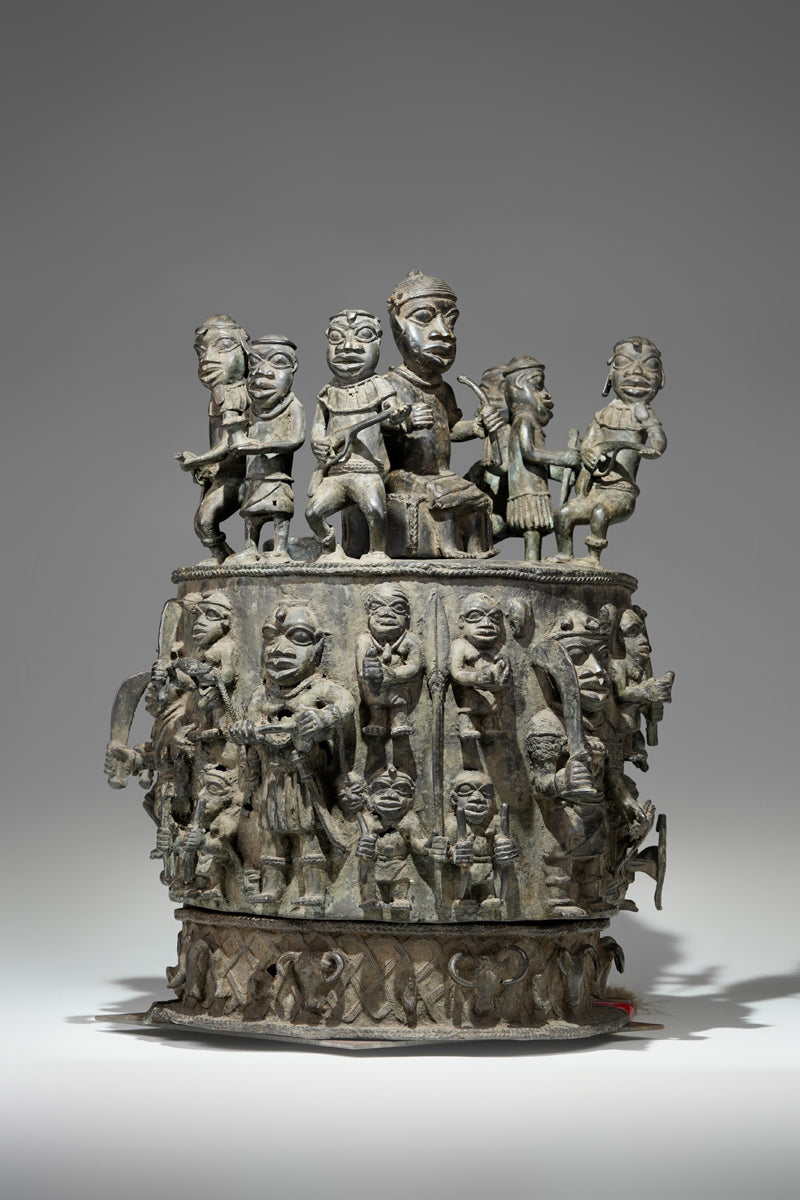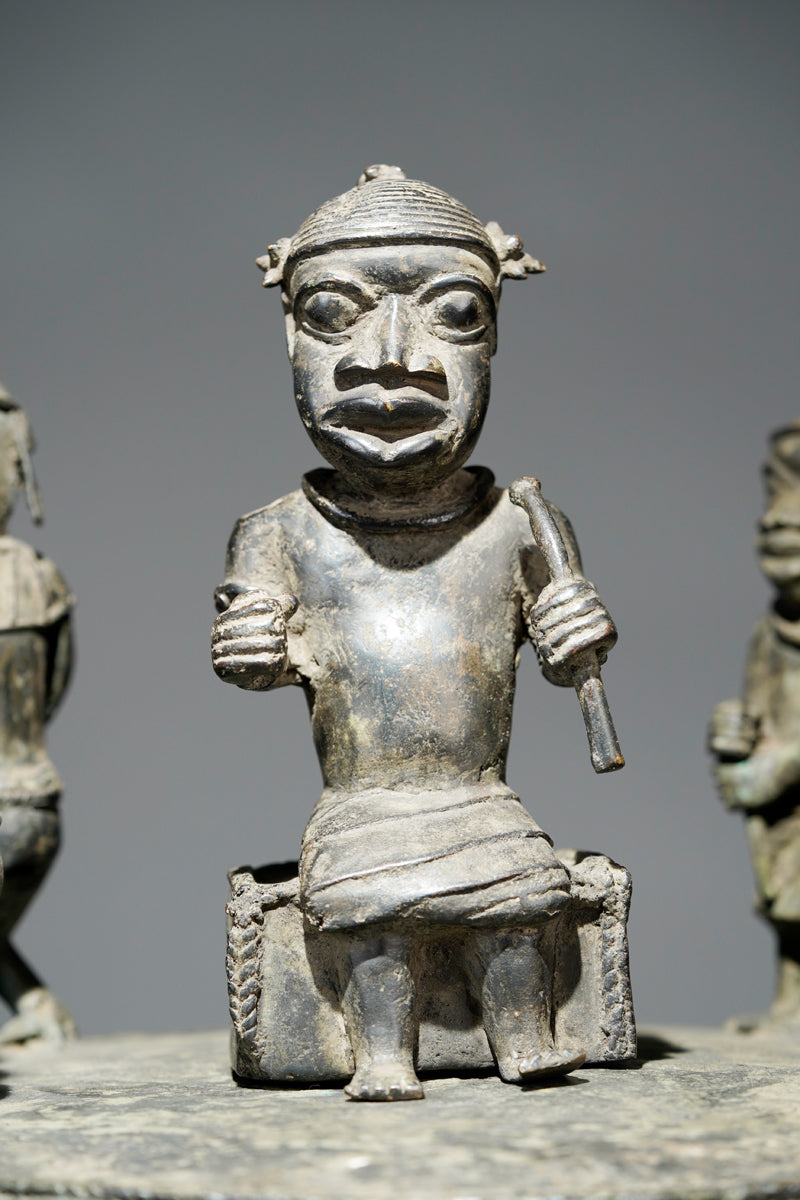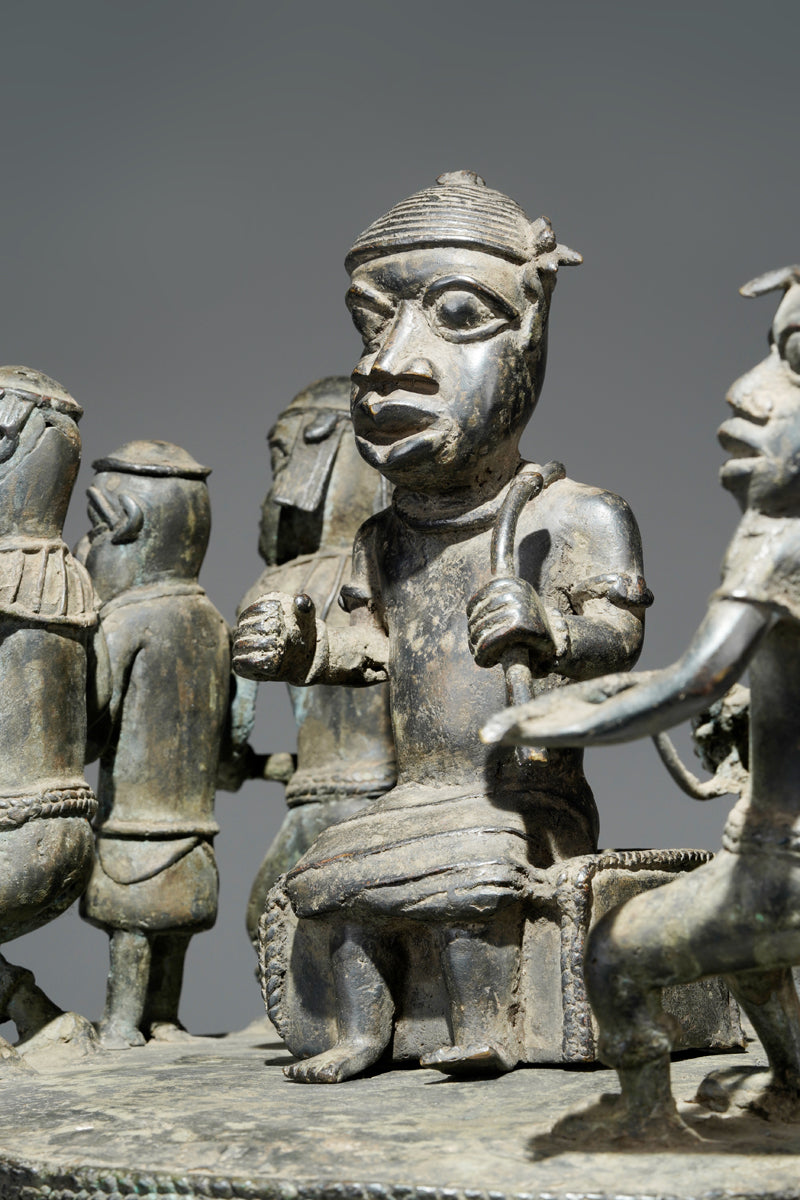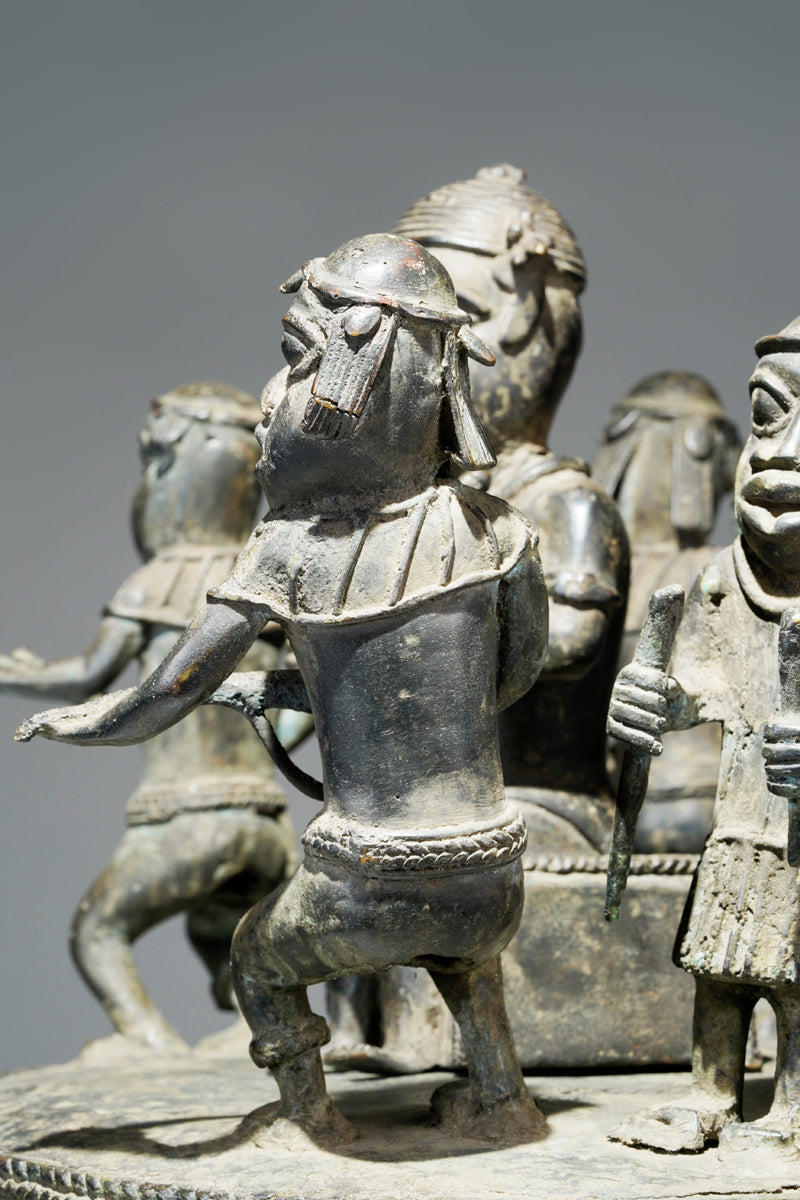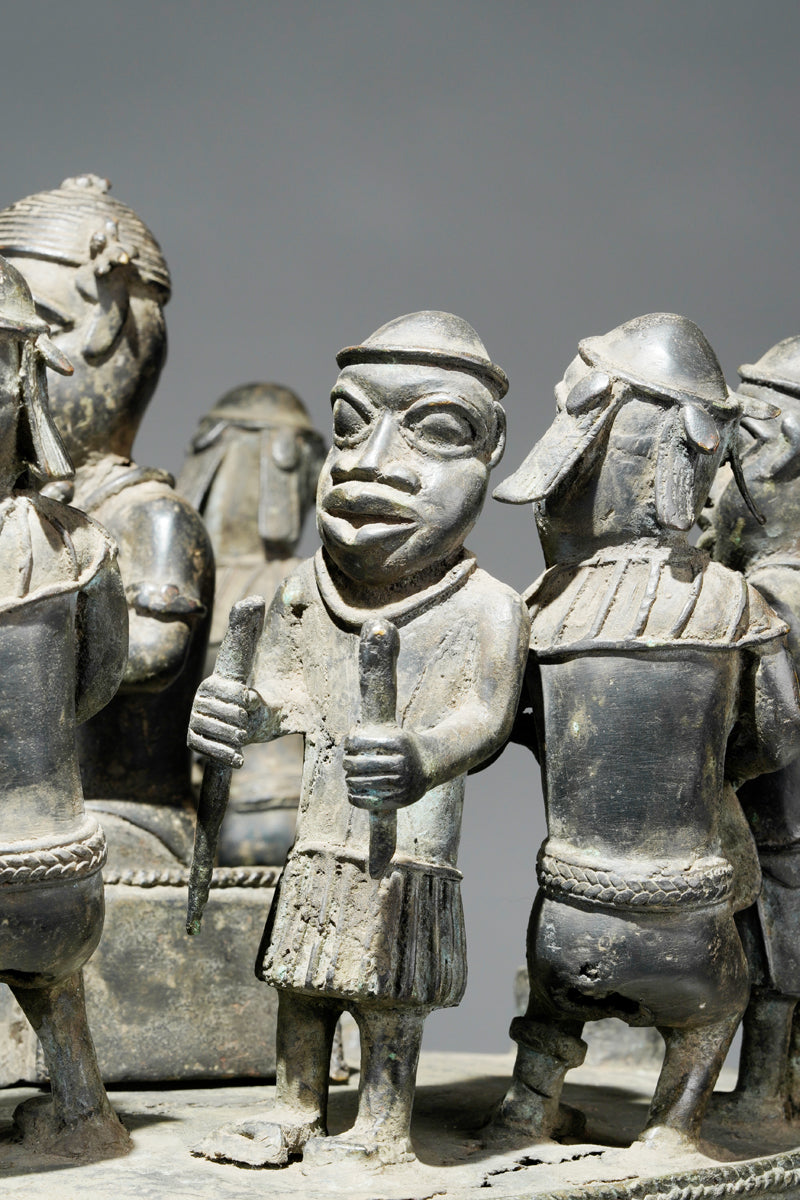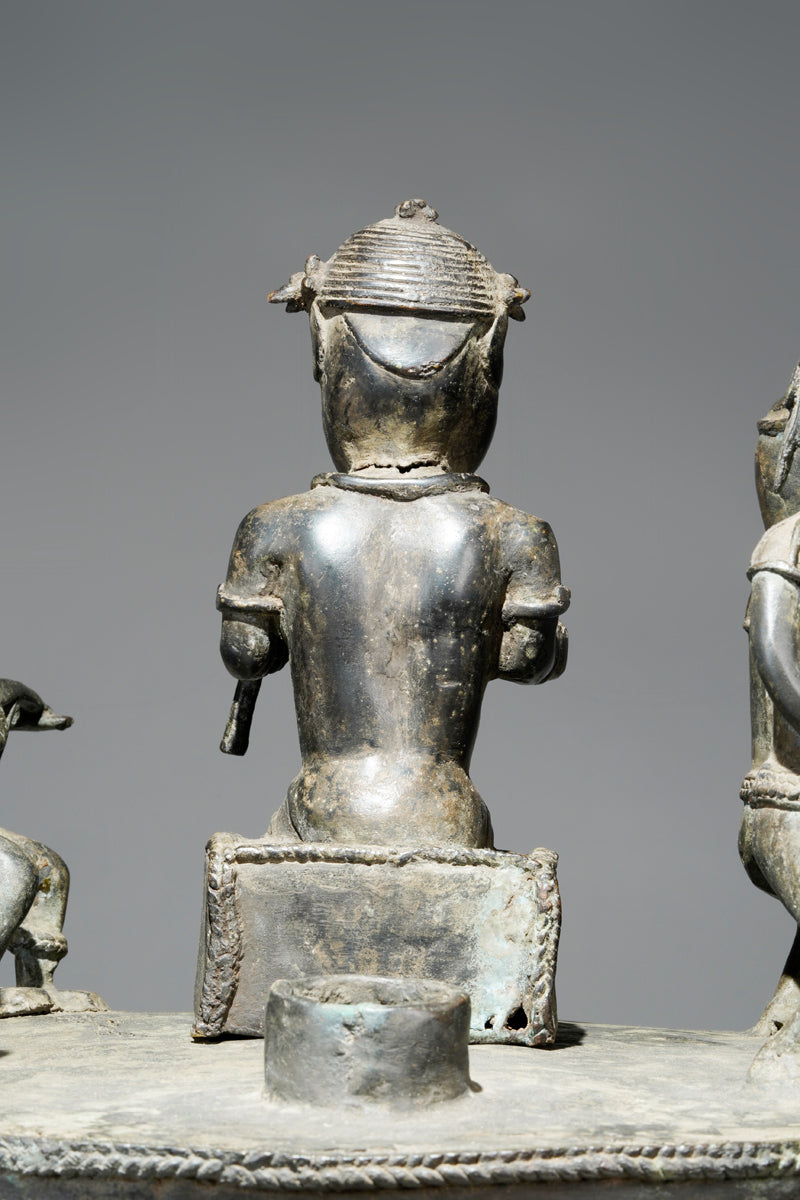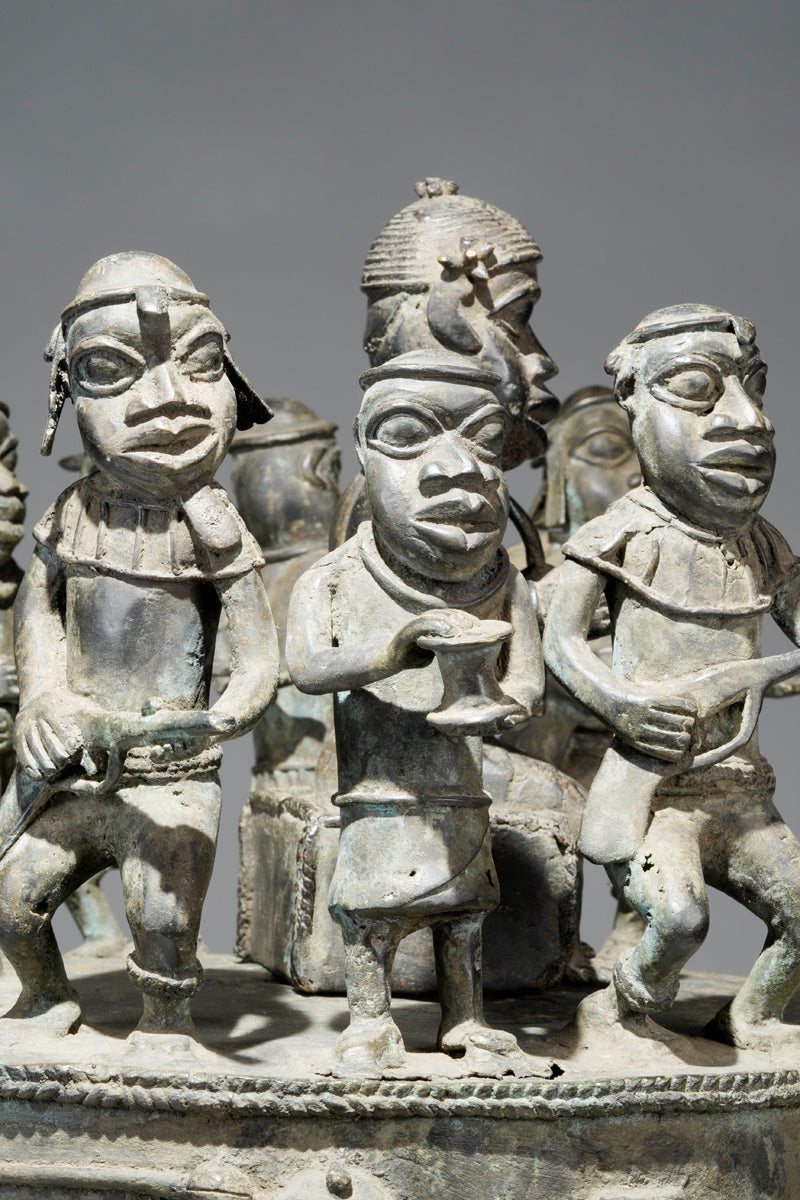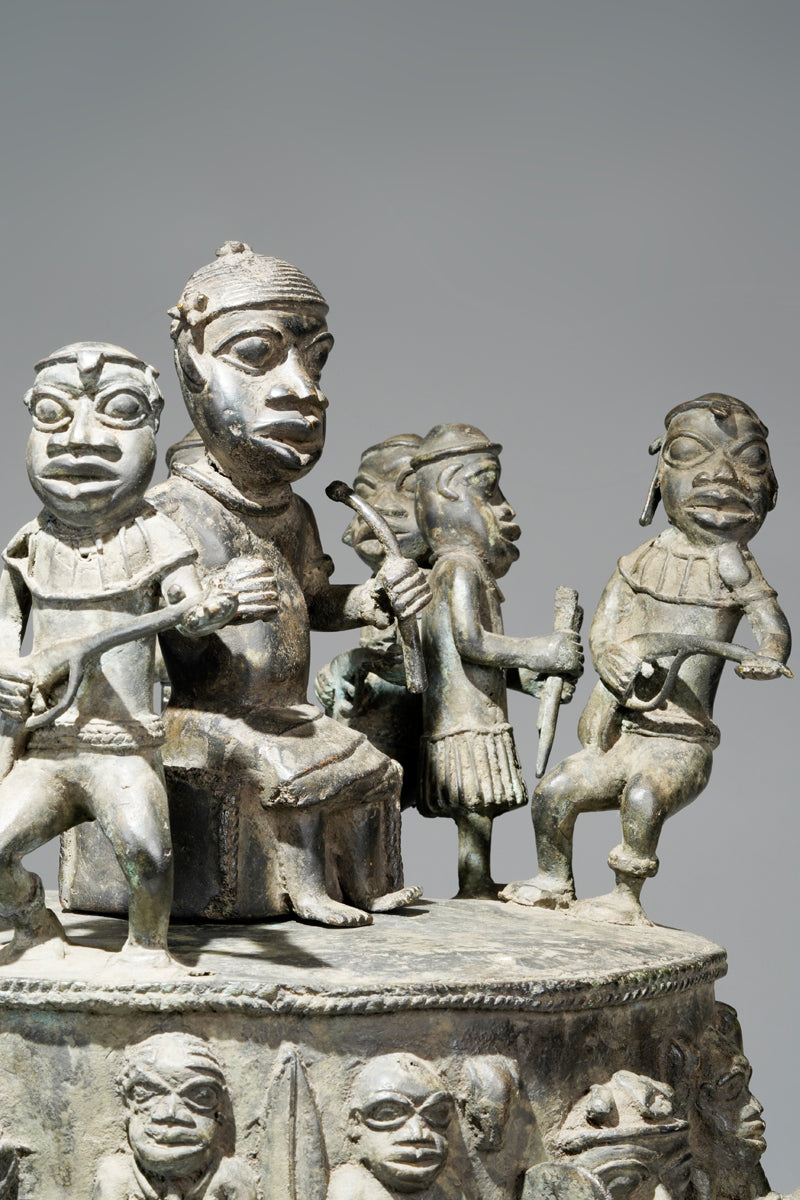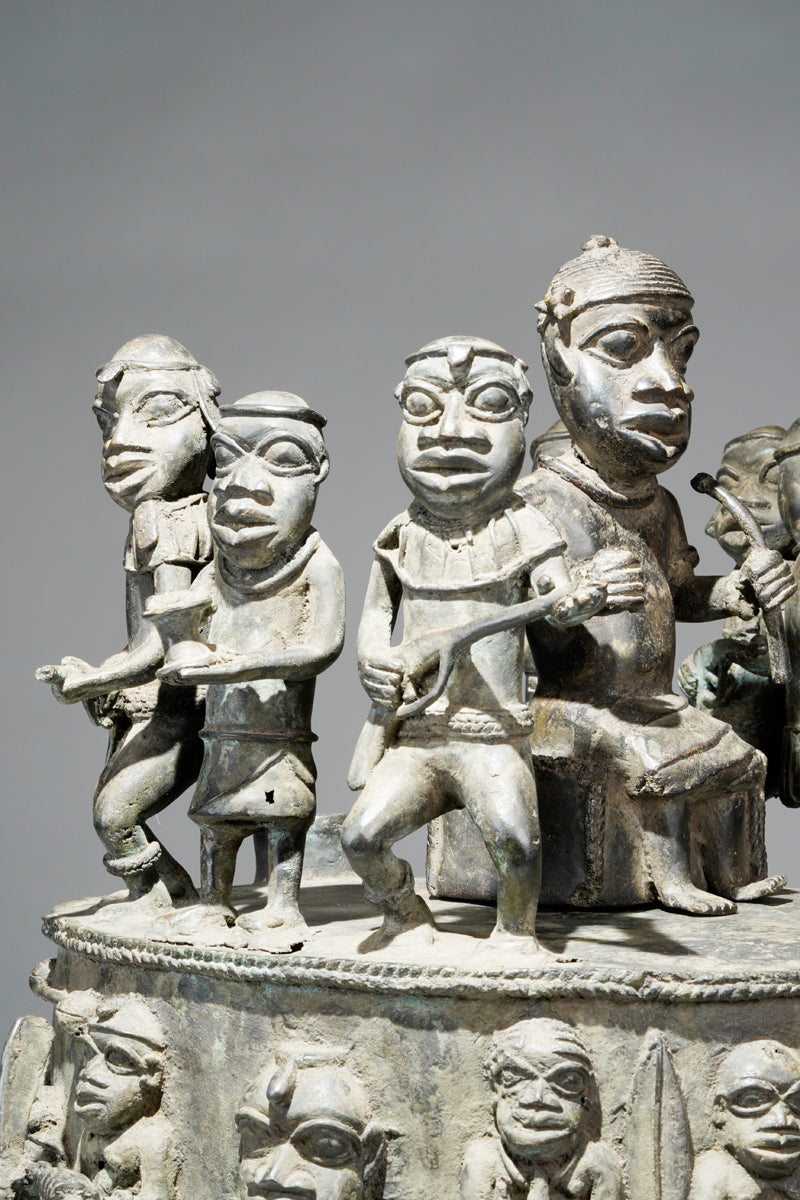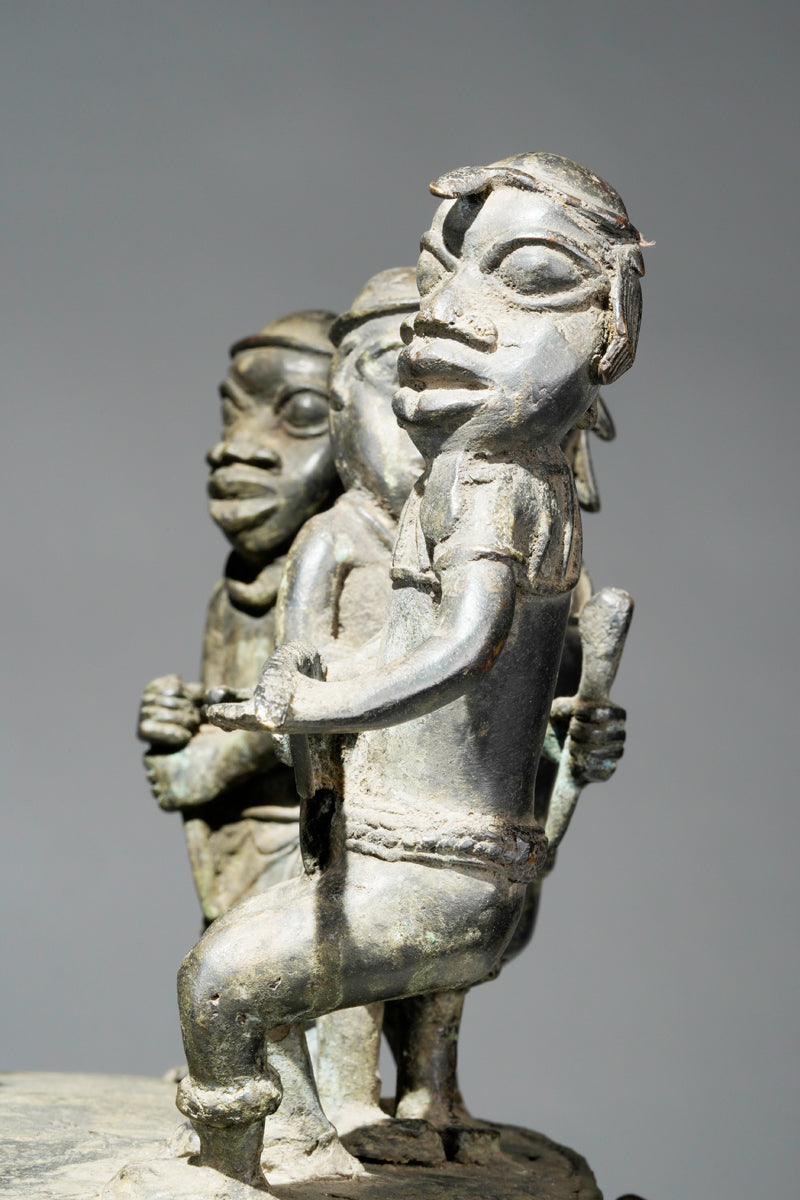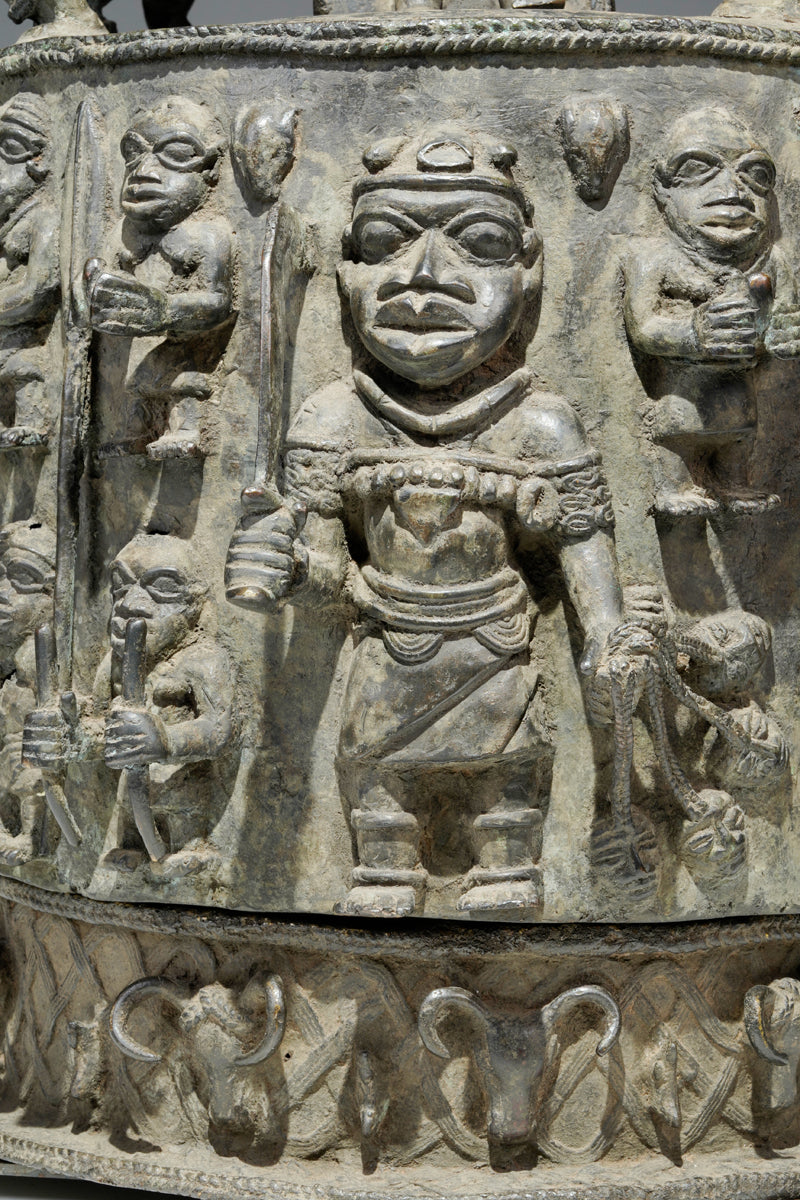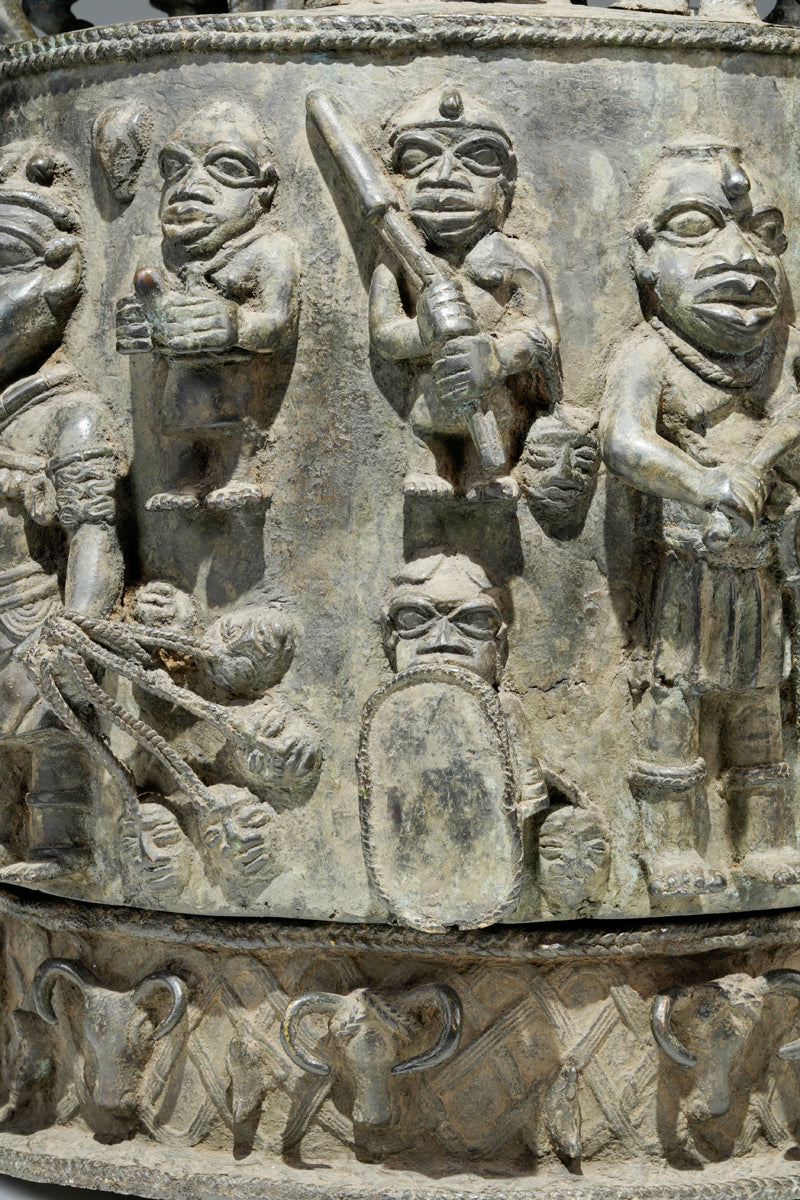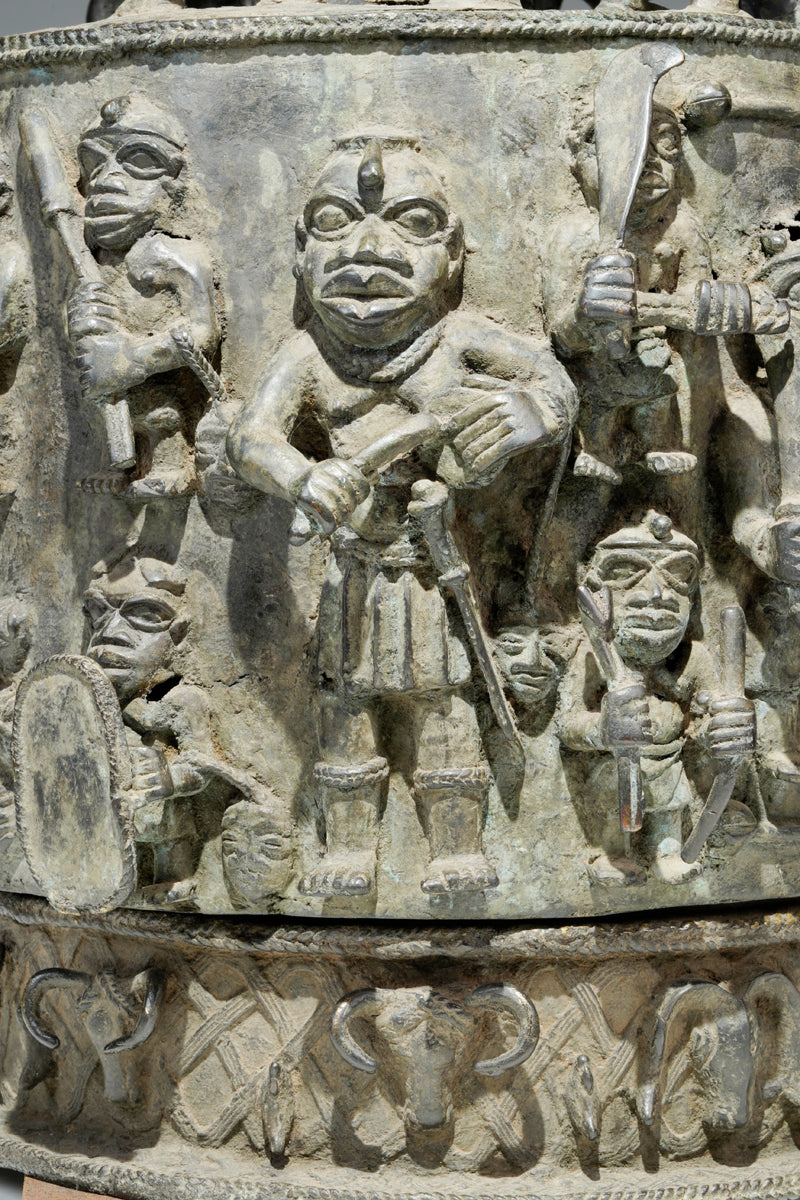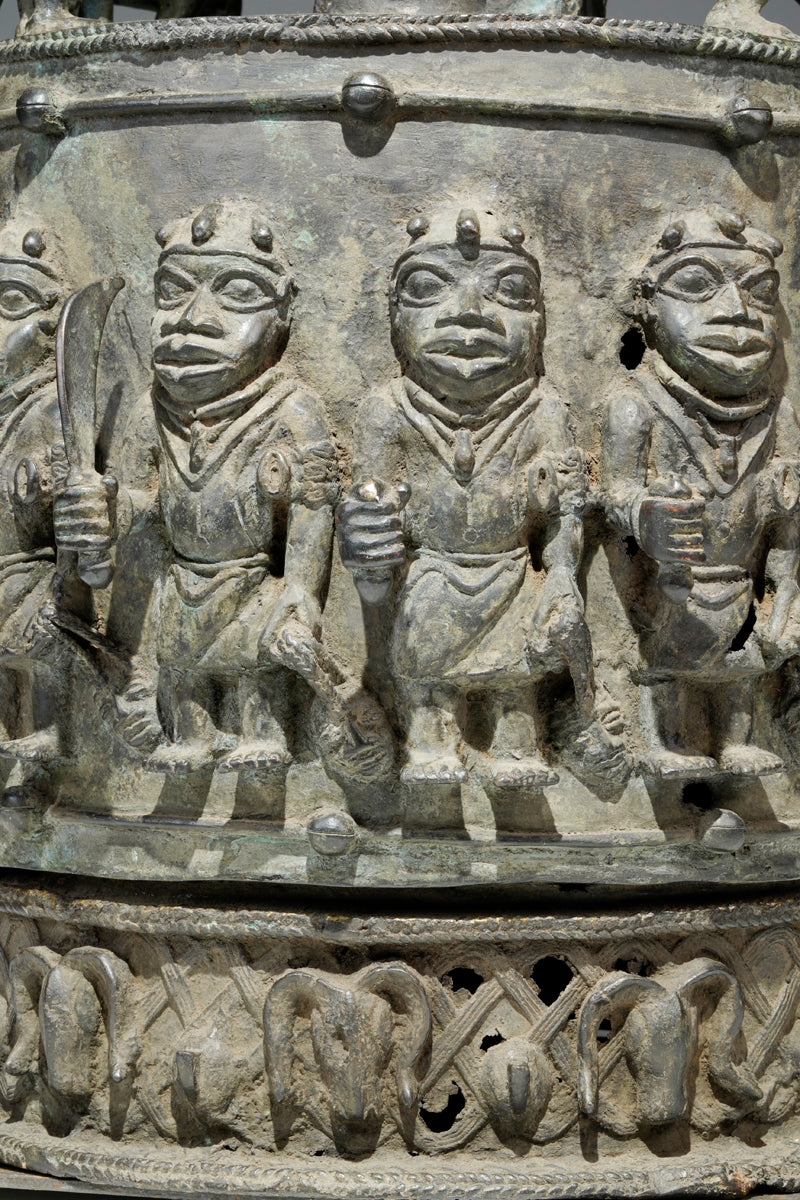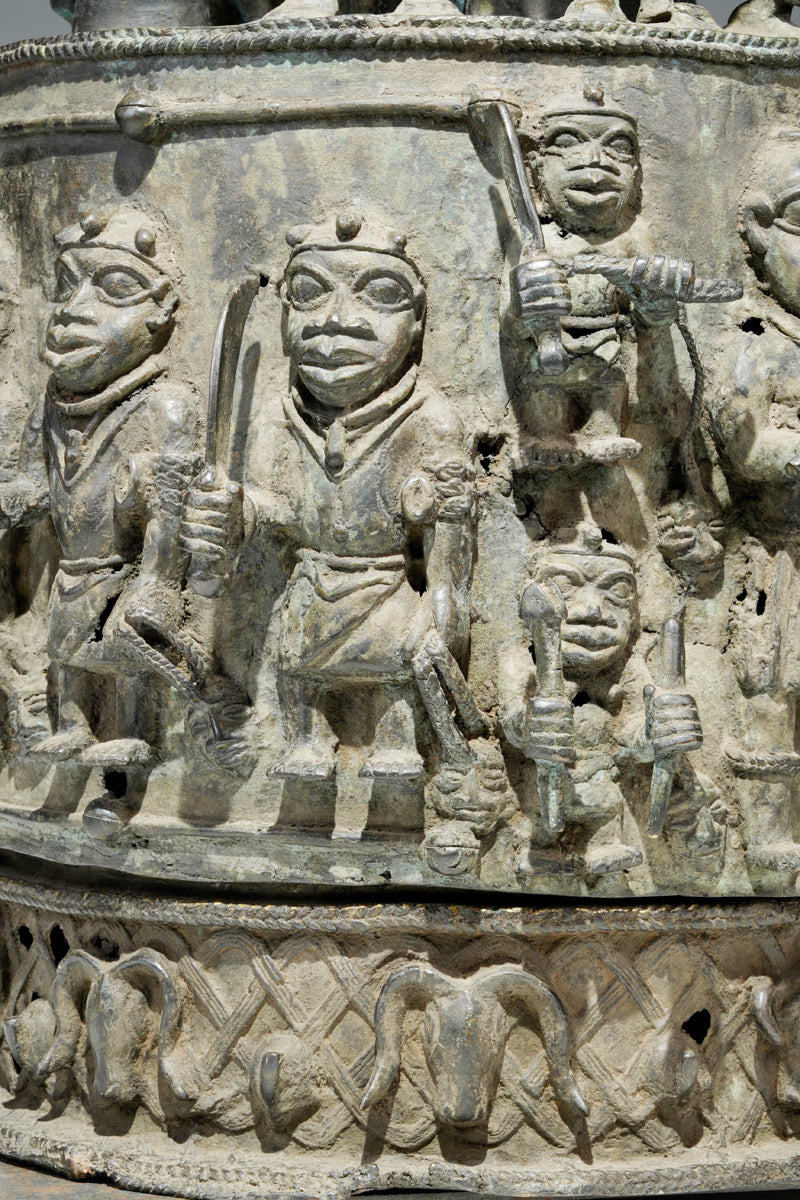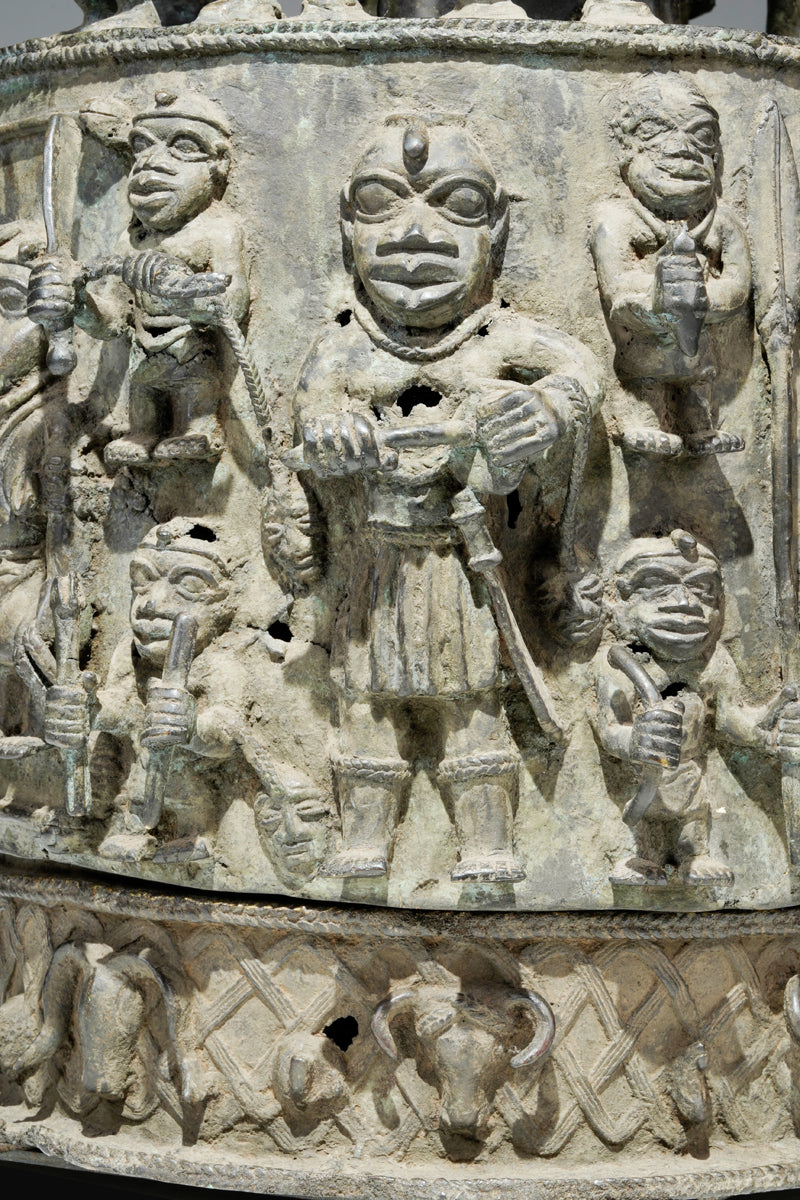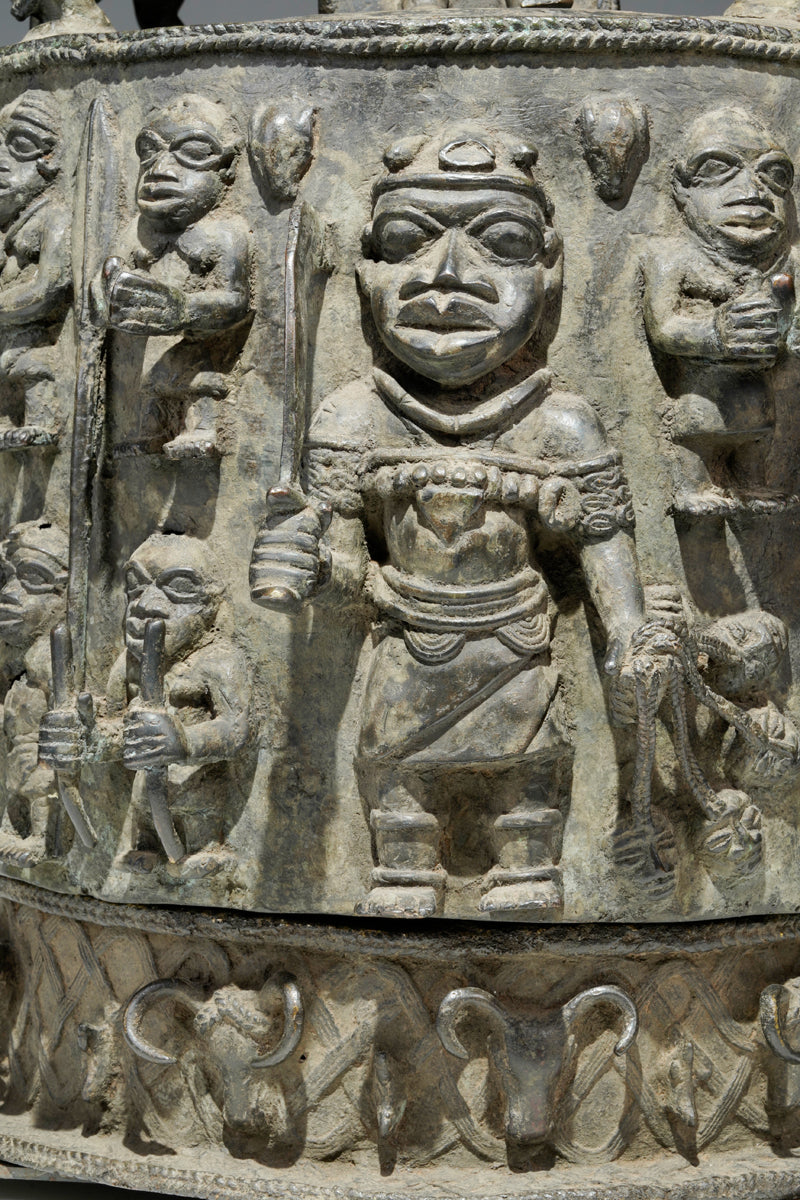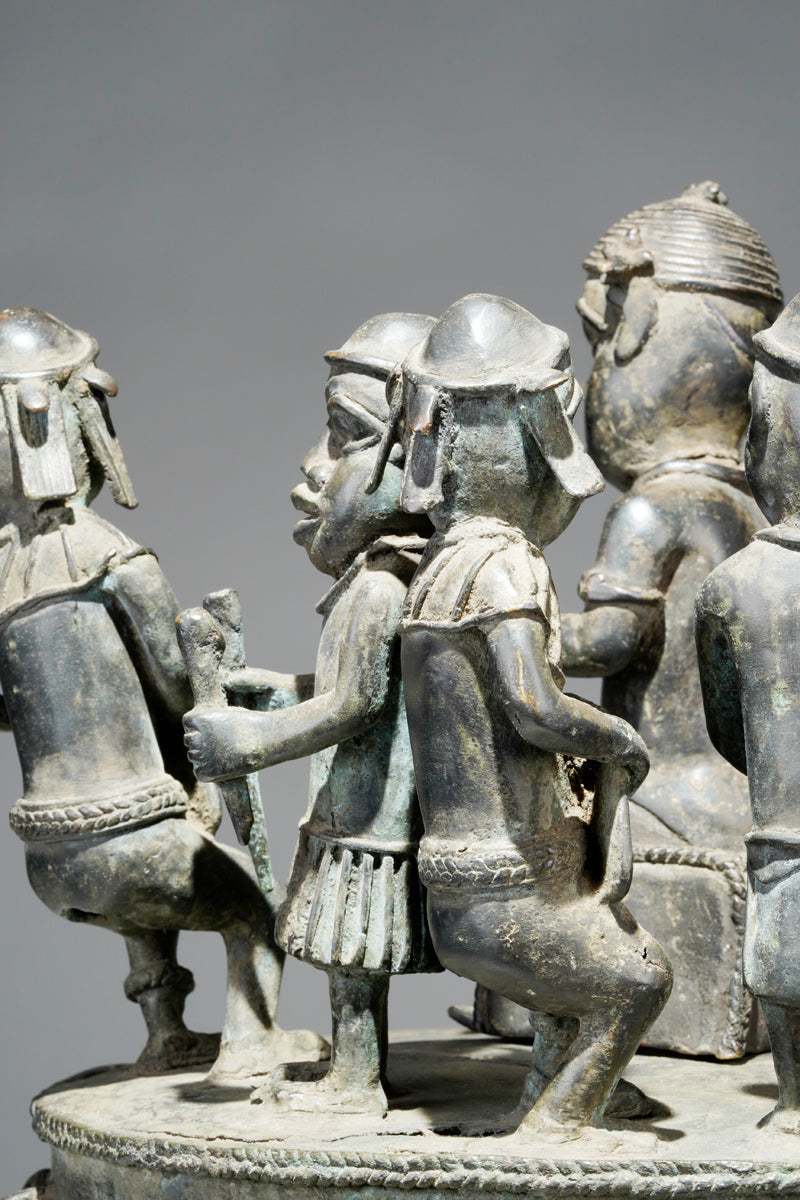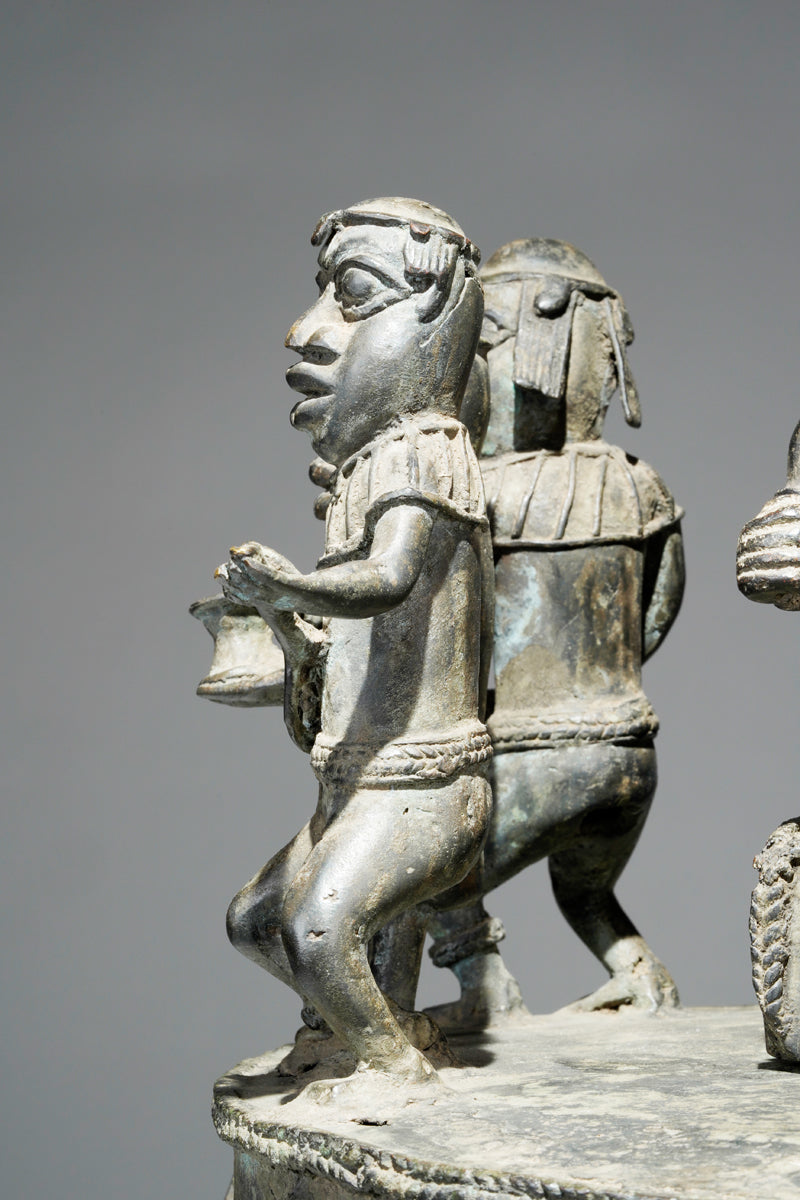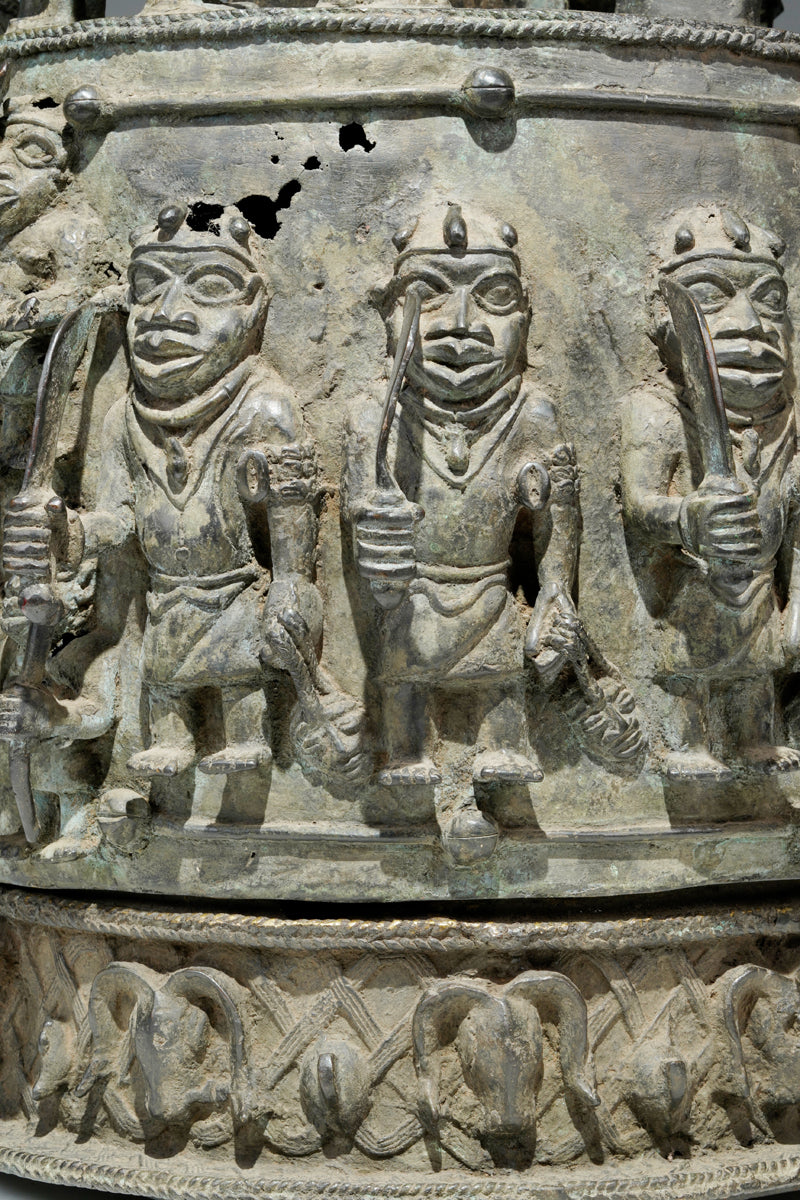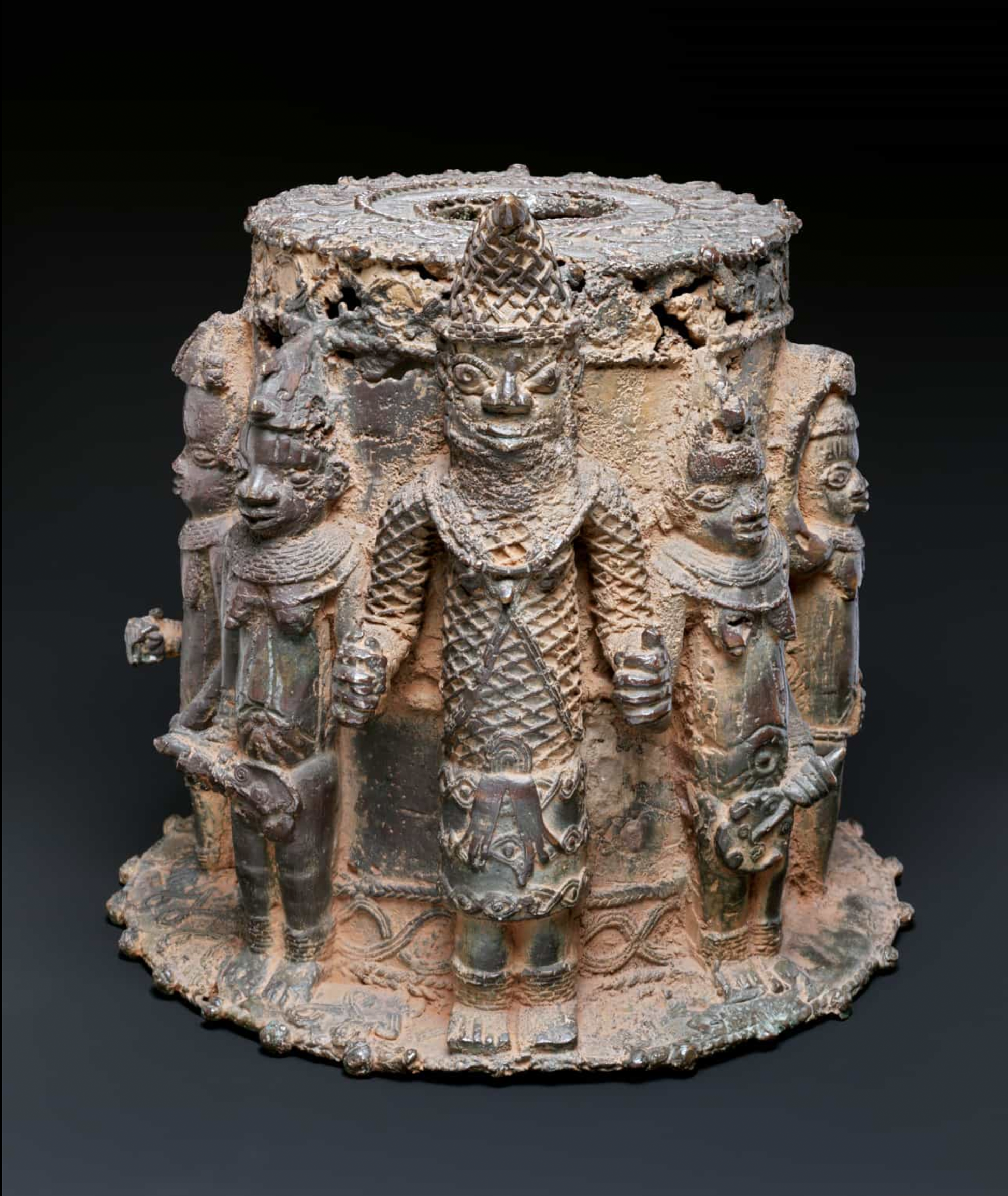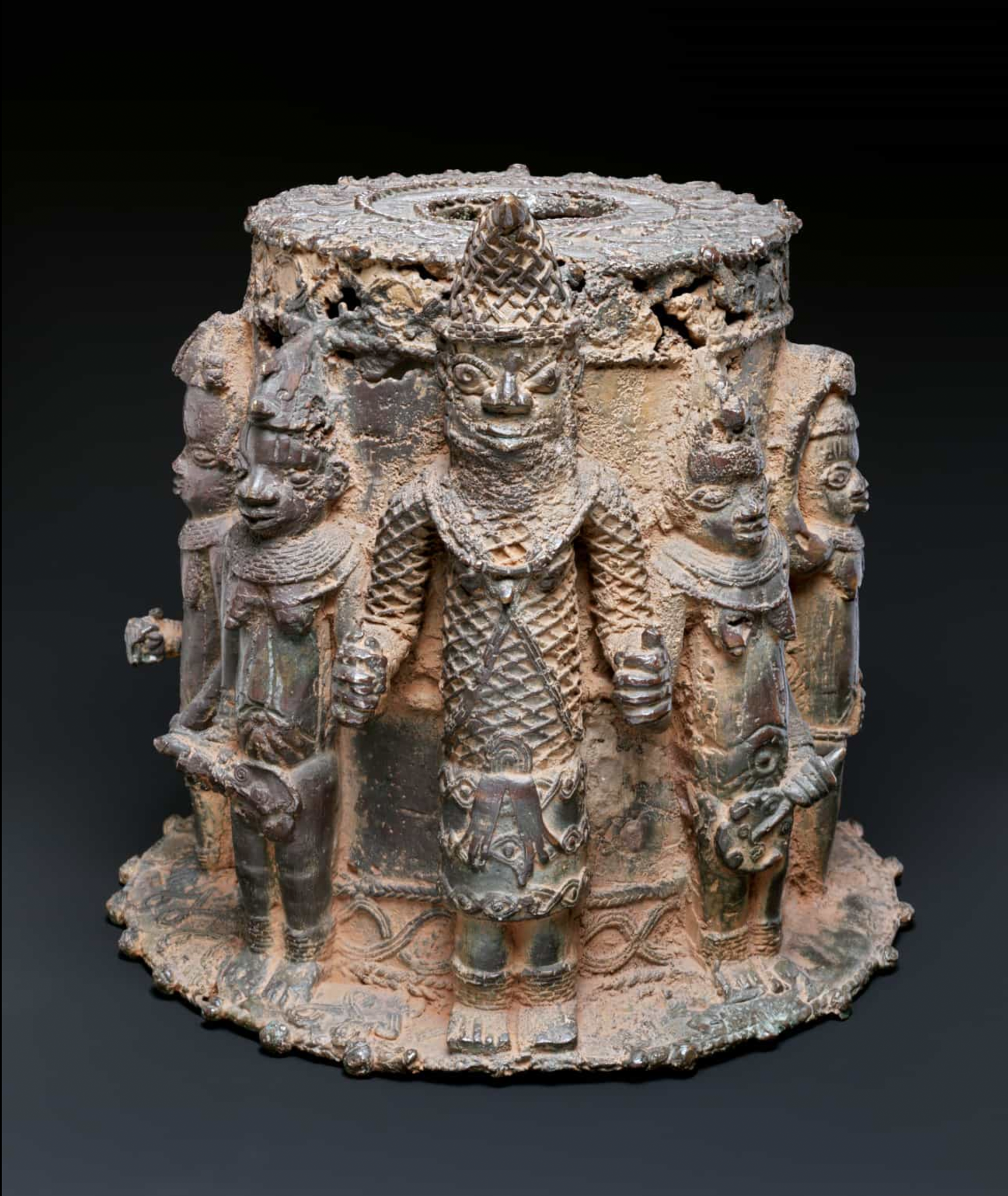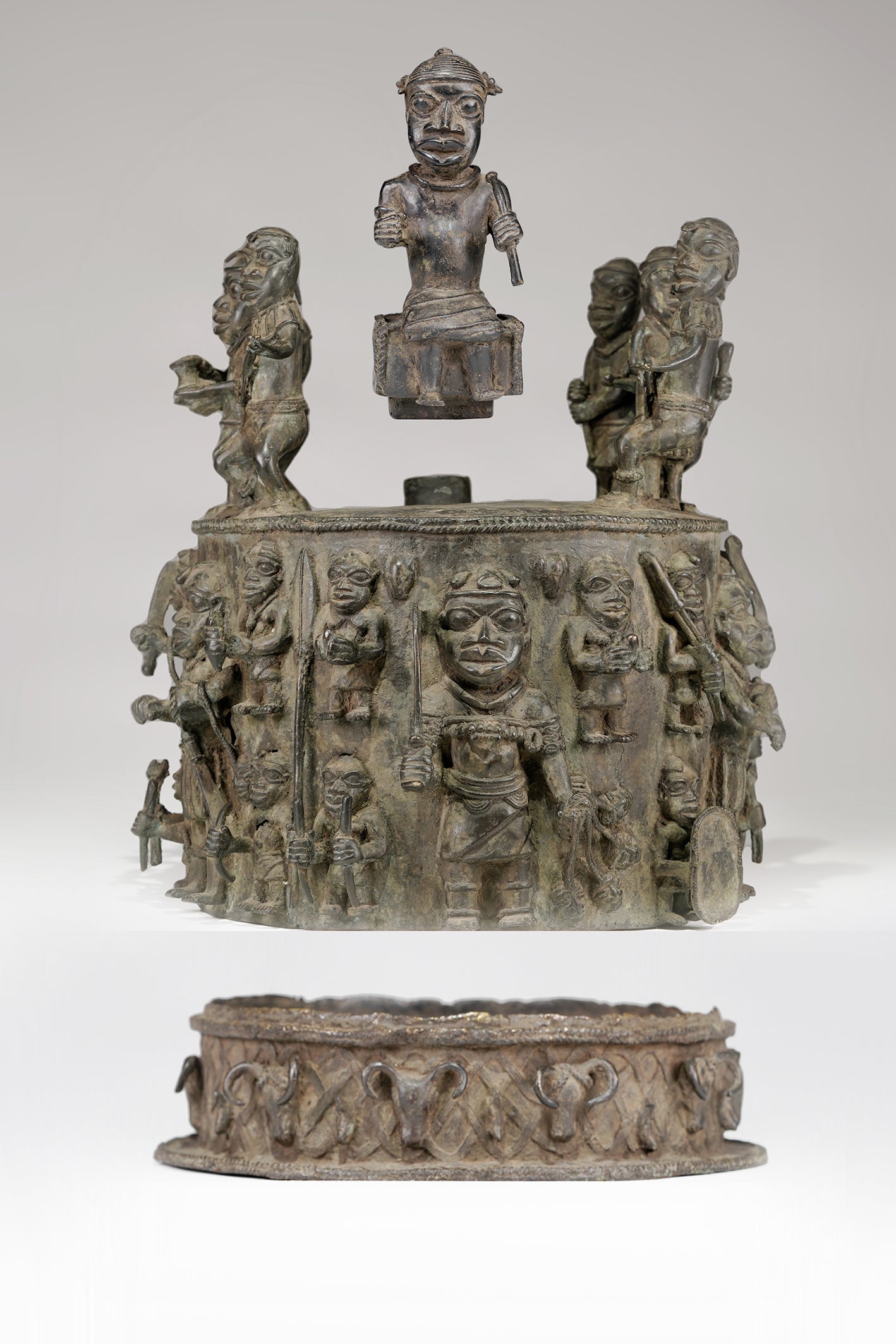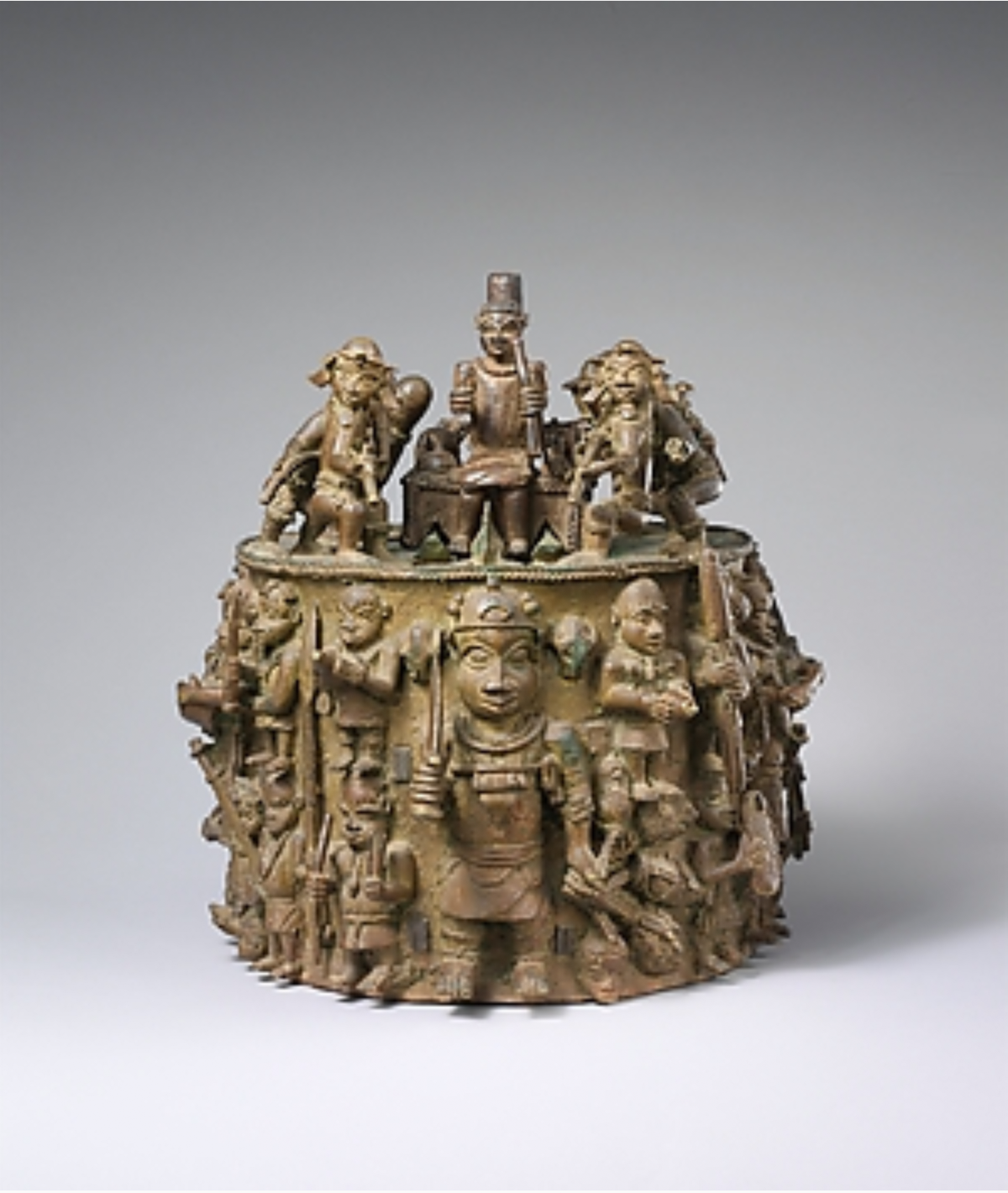wolfgang-jaenicke
An Ikẹgobọ Altar sculpture
An Ikẹgobọ Altar sculpture
Couldn't load pickup availability
An Ikẹgobọ Altar sculpture, Nigeria, a copy in the style of Benin, which is related zu Eheua, the "military commander", who played a central role in defeating hostile forces and restoring order to the Benin kingdom.
More info on request
.." the hand or arm, is recognised to be the seat of power of accomplishing things. Its worship is specific to warriors as well as wealthy and high-ranking people. It is worshipped to ensure success for special undertakings and give thanks. The Ọba and some people of high rank still have special altars of the hand, called Ikẹgobọ, which take the form of sculptured cylindrical objects in wood, or occasionally bronze, depending on the status of the sponsor.
Ikẹgobọ are placed on ancestral altars. Typically, the Ọba, Iy’Ọba and certain privileged chiefs may use cast forms, whereas chiefs use wooden ones (Dean, 1983). Altars of the hand are cylindrical, the outer sides decorated with relief carving. They are sometimes topped with sculptural elements, elephant tusks or antelope horns, and wooden altars are topped with a conical projection which mimics a tusk. Worship of the hand is important in Edo belief; the hand relates to an individual’s success with different skills, qualities or characteristics, such as craftsmanship, hunting or warcraft.
Chief Jacob Egharevba (1949, pp.88-89) worship of the ‘god of the hand’ emerged during the fifteenth century, during the reign of Ọba Ewaure I. What is less certain is whether altars of the hand also emerged at this time, or were a later development. Today, Ikẹgobọ continue to be used on altars by individuals who have high-ranking positions within the palace societies. " Source: Digital Benin
"In the kingdom of Benin, ikegobo, or "altars to the hand," celebrate the accomplishments of exceptional individuals. The hand is associated with action and productivity, and is considered the source of wealth, status, and success for all those who depend on manual skill and physical strength. Altars of this kind are commissioned in terracotta, wood, or brass, depending on the status of the patron.
"This ikegobo is an important historical document associated with the reign of Akenzua I. In the early eighteenth century, rebellious chiefs challenged Akenzua's leadership and threatened the unity and stability of the kingdom. Ehenua, Akenzua's ezomo or military commander, played a central role in defeating these forces and restoring order to the kingdom. In recognition of his heroism and service, Akenzua presented Ehenua with an ikegobo illustrating his military triumph.
The artist who created this work, composed of a series of units, used costume, scale, and composition to denote the relative status of the figures depicted on the frieze. A monumental image of Ehenua, dressed in full military regalia and clutching trophies of war, appears at the center of a group of diminutive soldiers, attendants, and priests. Two rows of musketeers above the frieze include Portuguese soldiers, an indication of the degree to which European powers were engaged in the support of Benin's leadership at this time. A separately cast sculptural group sitting in front of these soldiers portrays Oba Akenzua in the act of performing sacrifices to his ancestors so that Ehenua will prevail and triumph over his adversaries. Finally, a carved ivory tusk, now missing, was fitted onto the brass peg between the soldiers.
the three different parts of the Ikẹgobọ bronze we collected
Die Individualisierungstendenzen in der Kunst Benins des 18. und 19. Jahrhunderts zeigen sich in der Entstehung eines neuen Altartyps, des Altars der Hand. Während Altäre mit den Gedenkköpfen der Verehrung der Ahnen und der von ihnen überkommenen Macht dienen, so steht die Verehrung der Hand an den neuen Altären für die individuellen Fähigkeiten und Leistungen des Menschen...
The Berlin example of an Ikẹgobọ altar also shows an elaborate base on which the figures stand in three-dimensional relief. By the way: A rarity, the Berlin Ikẹgobọ survived the cleaning attacks of the 1960s and 1970s in Western Museums without damage and still shows the original patina with its laterit dust. Now that this object has been restituted to Nigeria, it is hoped that it will not meet the same fate in Africa as most Benin and Ife objects in Western museums: they have been scrubbed to a beautiful shine like gold.
